The frumpy, functional modernism of the old Chicago Sun-Times Building came down for Trump Tower and glassy apartment buildings sprouted around the Tribune Tower, but the subtlest change here might be the most influential: the removal of the weird little plaza in the middle of Wacker Drive was part of a project that created space for the Chicago Riverwalk. Known as Heald Square–really just an upjumped traffic island–it (mostly) disappeared when the “Revive Wacker Drive” project reconstructed the multi-level road in the early 2000s, moving it 50 feet south.

Digging into the specific changes: opened in 1957 and fresh and new when this postcard was published, the Chicago Sun-Times Building had a 45+ year run as the newsroom and printing plant for one of Chicago’s major dailies. Sold in 2001, it was demolished in 2004 and 2005, replaced by a handsome Adrian Smith + Gordon Gill-designed tower which opened in 2009. That pathetic, ugly sign was added a few years later–it’s so tacky that it spurred the city council to pass an ordinance restricting signage on the river, but the damage was done. The Tribune Tower, Wrigley Building, and Hotel Intercontinental are superficially unchanged–Tribune Tower has been converted into luxury condos–but now they’re surrounded by 1970s and 2010s modernism. To the left, the blocky mediocrity of Perkins + Will’s 444 N. Michigan, built in 1977. To the right, the glassy residential towers were developed by Optima, designed by David Hovey, and completed in 2013 (the shorter one, Aston Apartments) and 2017 (the taller, greener Optima Signature). The best part is the colorful mural obscuring the mechanicals of the shorter building.
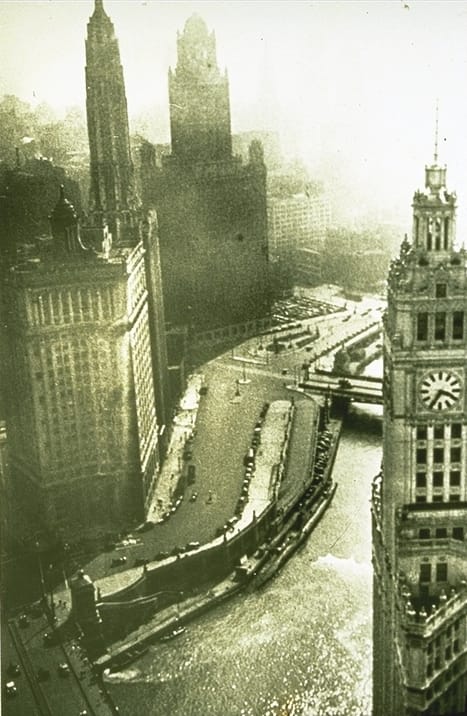
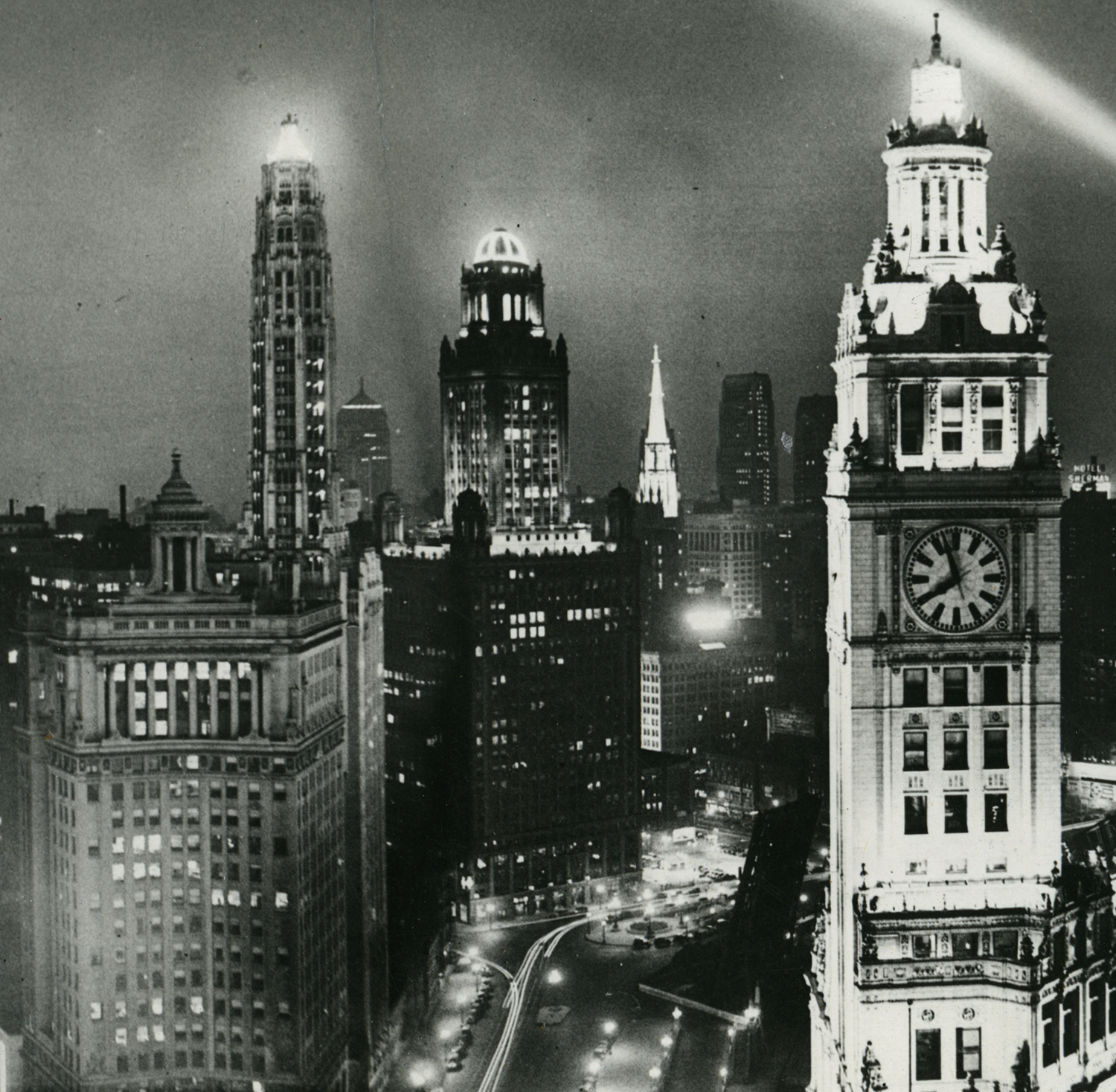
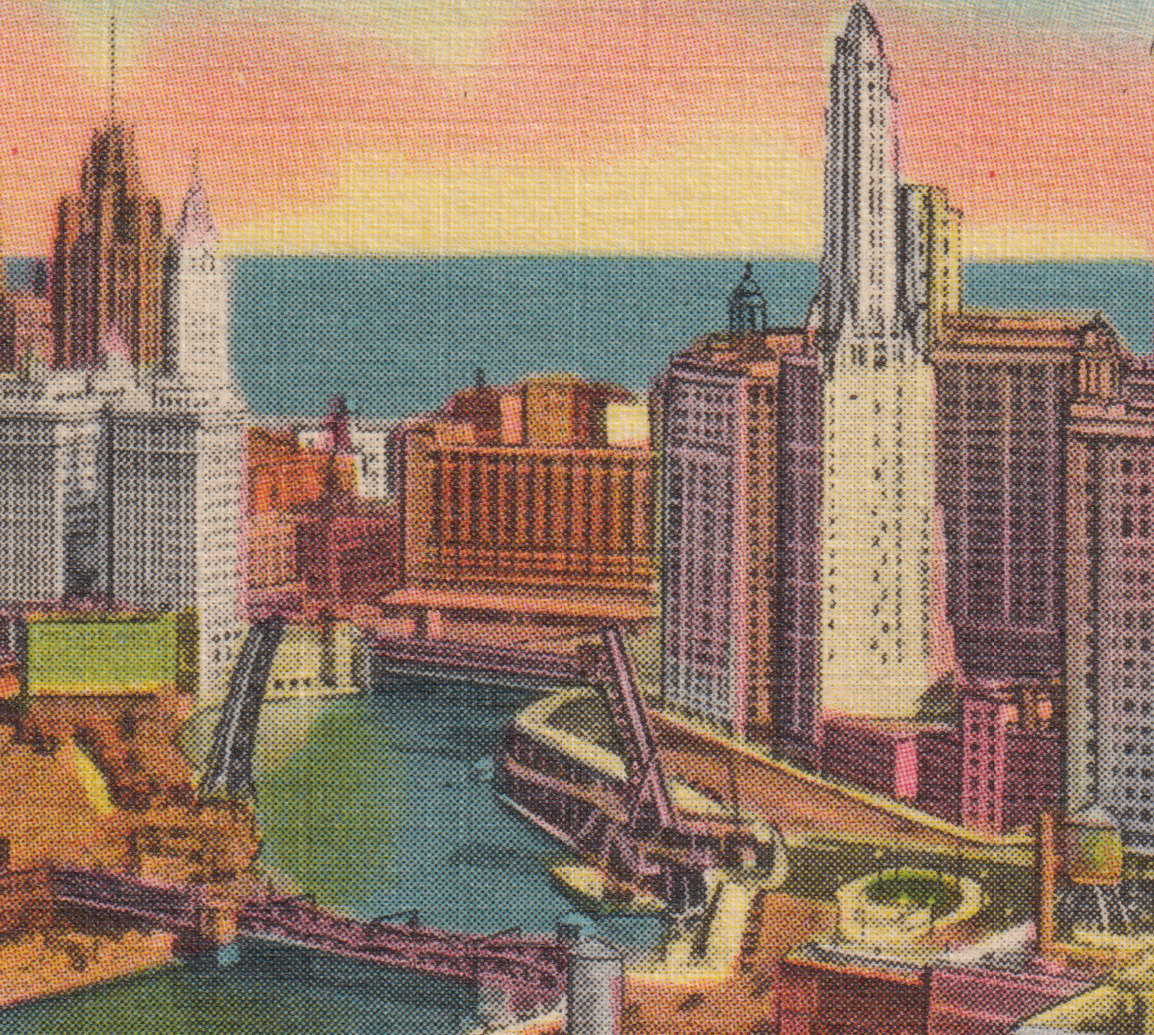
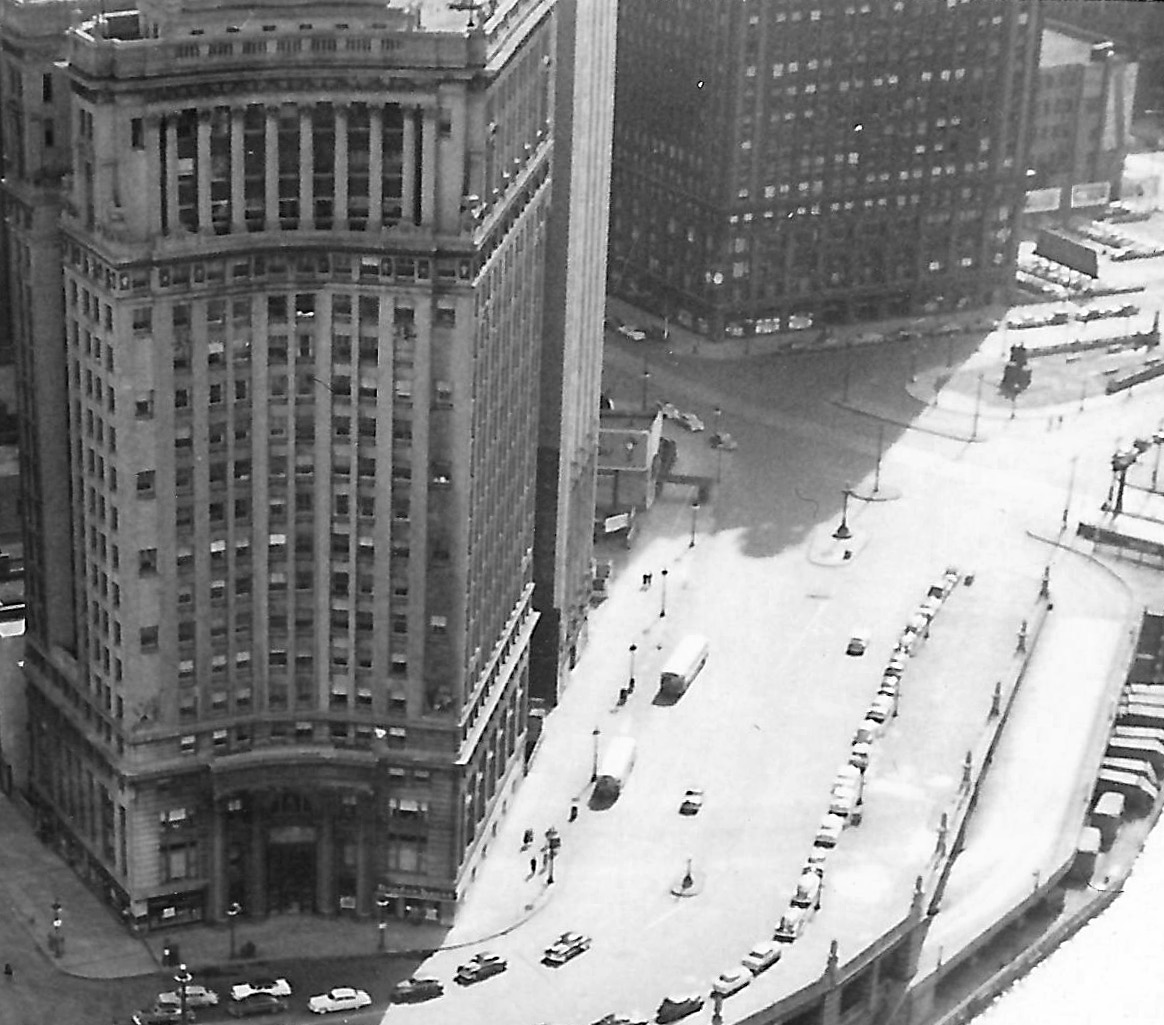
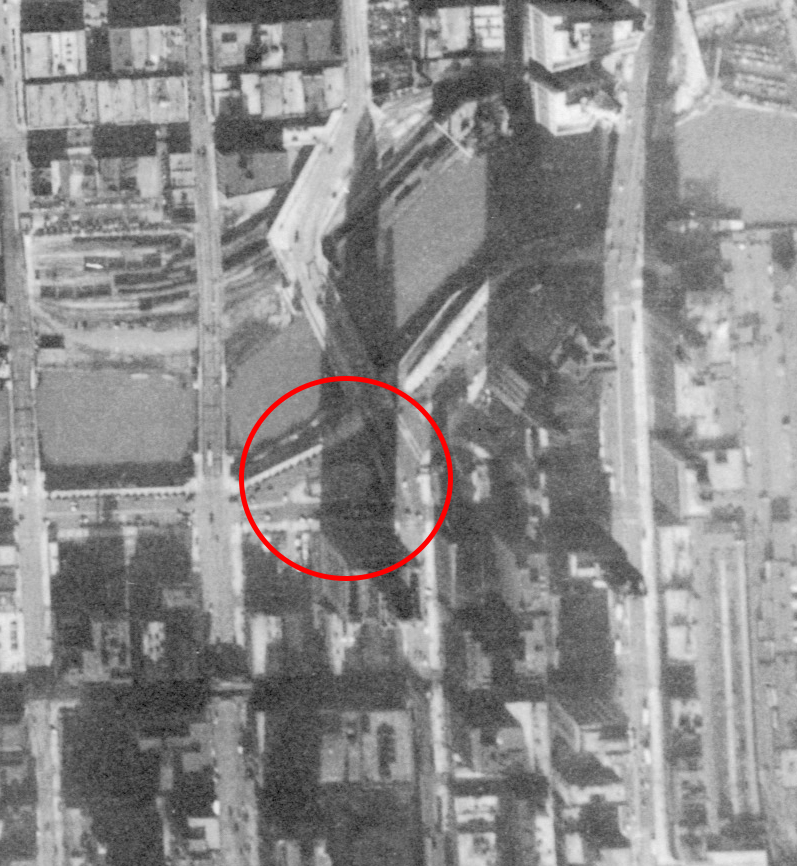
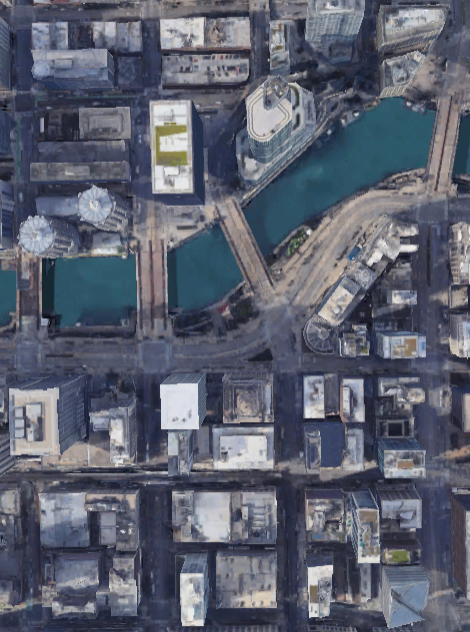
1926, Wikimedia Commons | 1930, Library of Congress | In a Tichnor Bros. Postcard, Digital Commonwealth | 1953, Chuck Battles, Wikimedia Commons | 1938 aerial, Illinois State Geological Survey | 2023 Google Earth
1928, Newberry Library
While the vertical development is unmissable, I really think the street-level change may be the most important thing here (...and my lack of attention to it also meant I got the angle wrong the first time I took this shot). Heald Square was a small plaza set right in the middle of Wacker Drive when it opened in 1926. Defined by the limestone obelisks designed by Edward Bennett, the plaza received a showcase piece of public sculpture in 1941 with the installation of The Three Patriots, sculpted by Lorado Taft and Leonard Crunelle.
Depicting George Washington, Robert Morris, and Haym Salomon, the monument was the brainchild of Barnet Hodes, an influential Chicago attorney who’d grown up as one of the only Jews in La Salle, Illinois. Salomon’s presence was the big thing here–relatively obscure today, Haym Salomon was a Jewish financier who helped fund the American Revolution. With the Nazis ascendant abroad and the American antisemitism of Father Coughlin, Henry Ford, and Charles Lindbergh on the rise, Hodes tapped a broad group of Chicago elites to fund a piece of public sculpture with a clear message: ethnic and religious diversity has been core to the American project from the beginning.
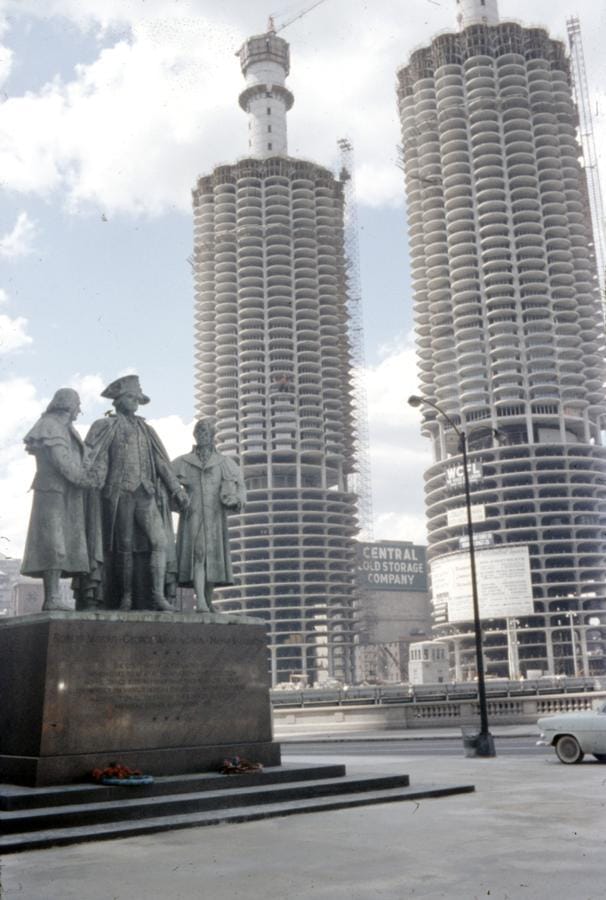
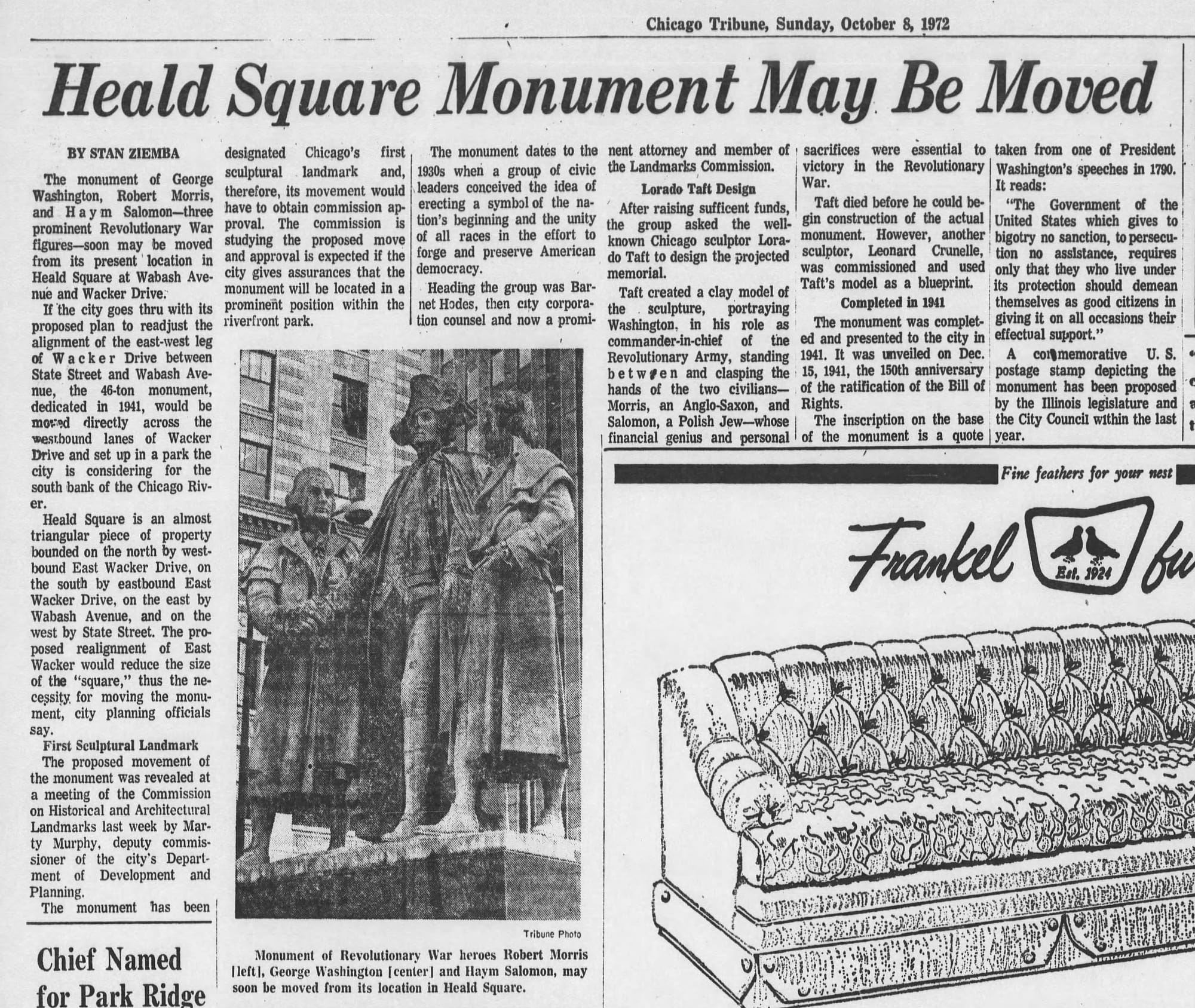
Early 1960s photo, Mildred Mead, University of Chicago via Chicago Collections | 1972 article on moving the monument
…but a scruffy, windswept traffic island was kind of a shitty place for a high-minded public monument (and also probably not great for traffic flow, either). By the late 1950s there were plans to relocate the statue, with a rough idea to move Wacker Drive a bit south and create a riverside park.
It took more than 40 years to get funding and the relevant agencies in line, though. In the late 1990s the city cobbled together $200m in federal, state, and local funding for the first phase of Revive Wacker Drive. Fundamentally a project for cars rather than people (crowd boos), Revive Wacker Drive did set the stage for the construction of the riverwalk (crowd cheers).
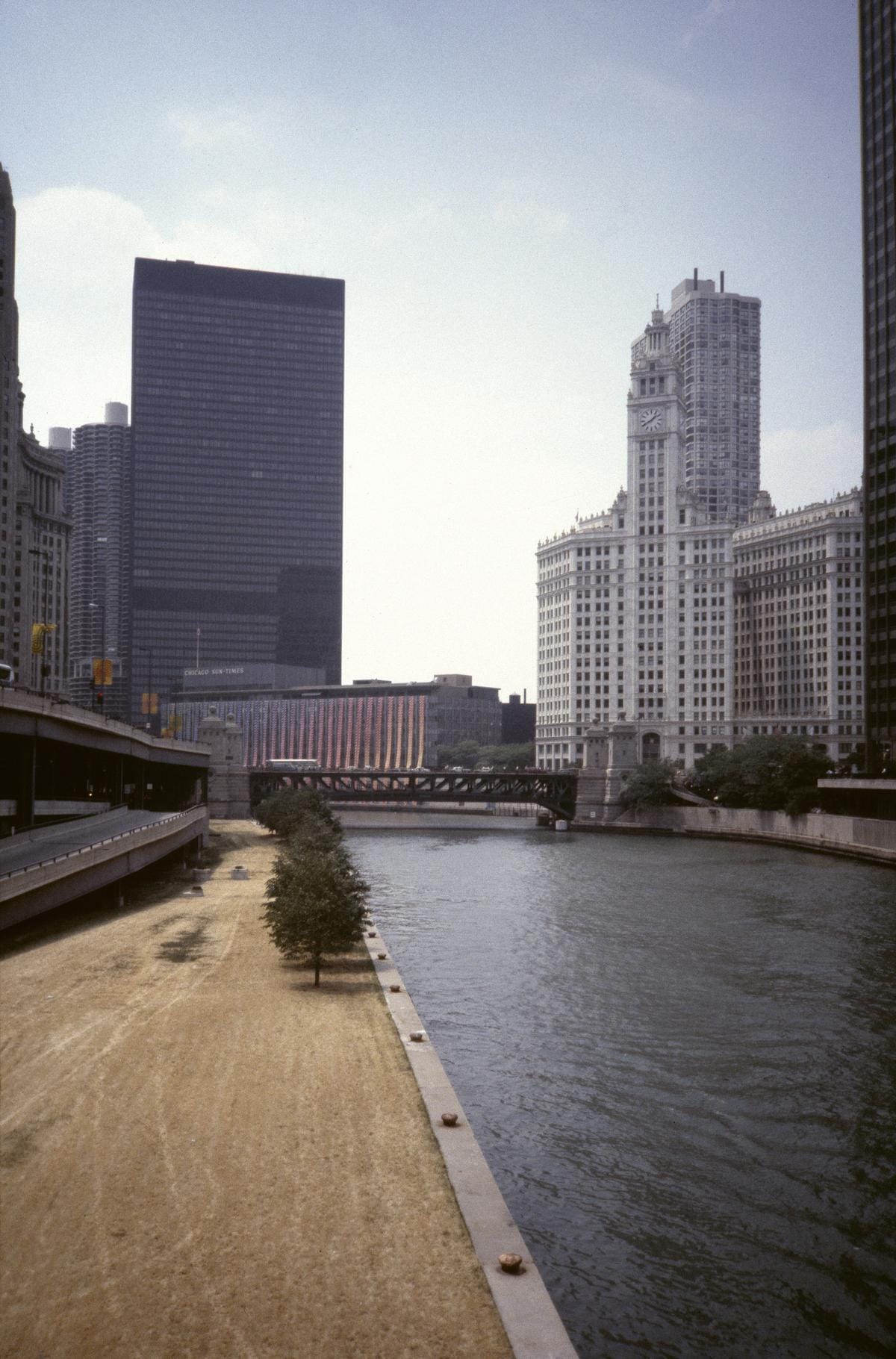
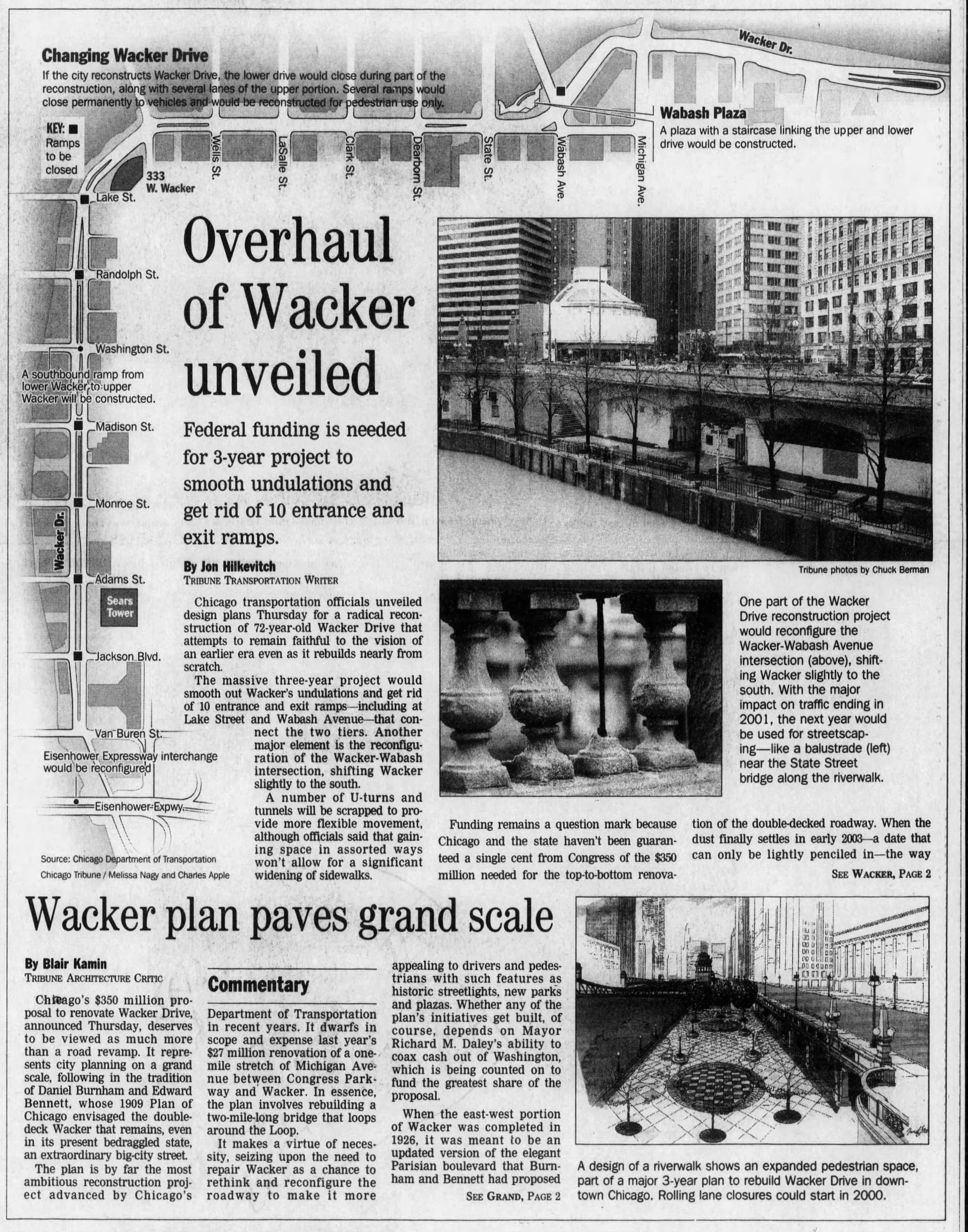
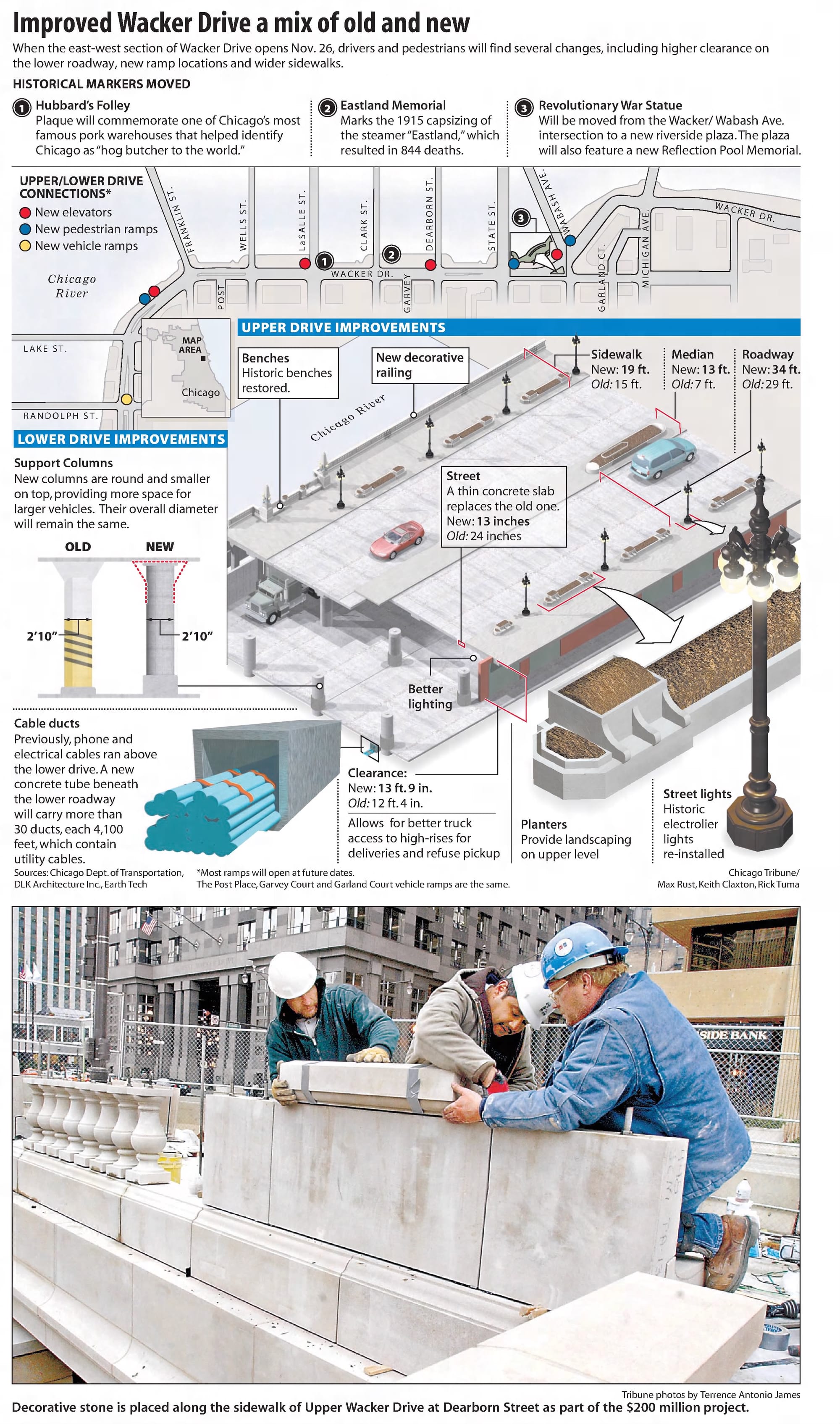
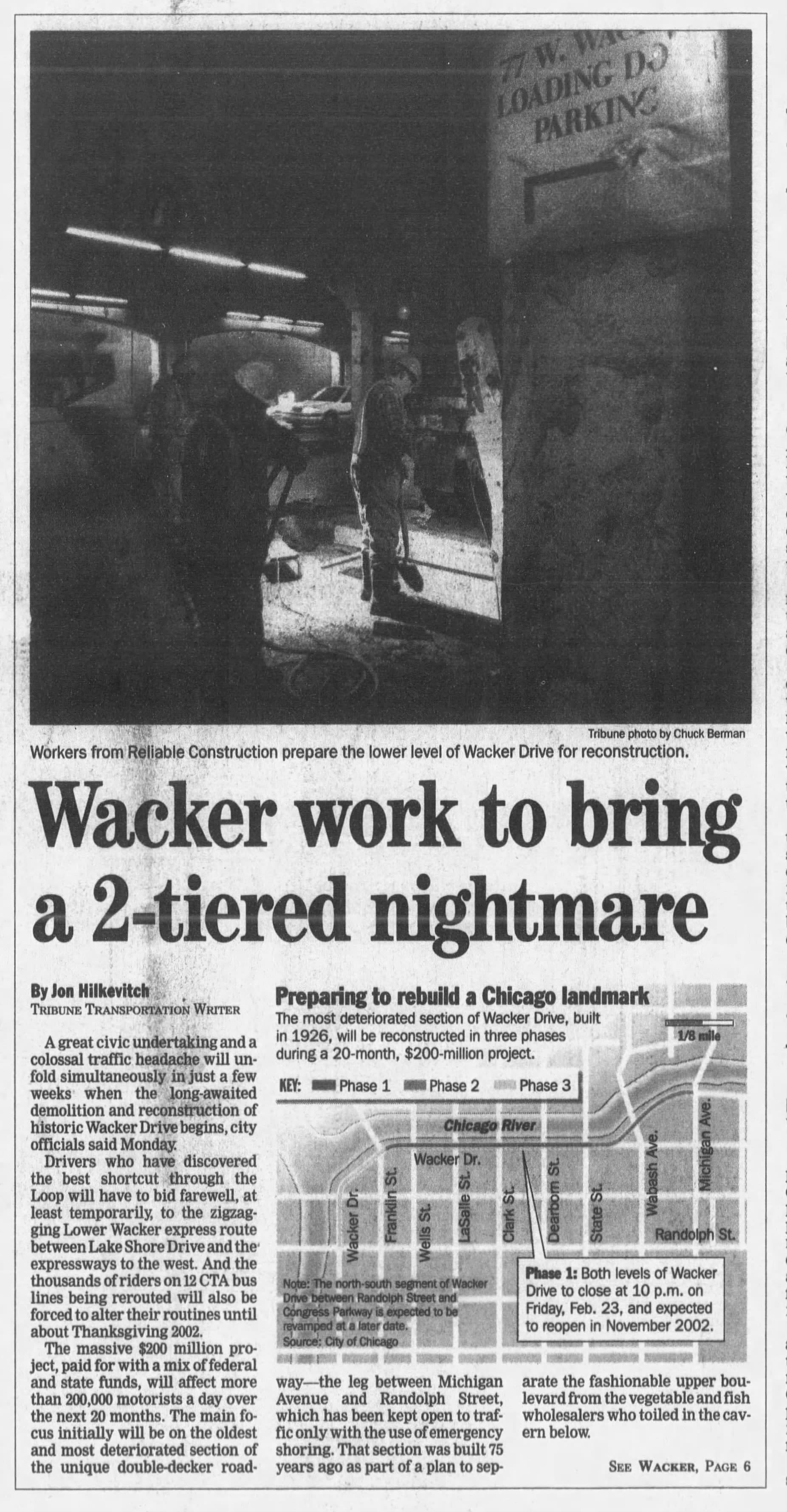
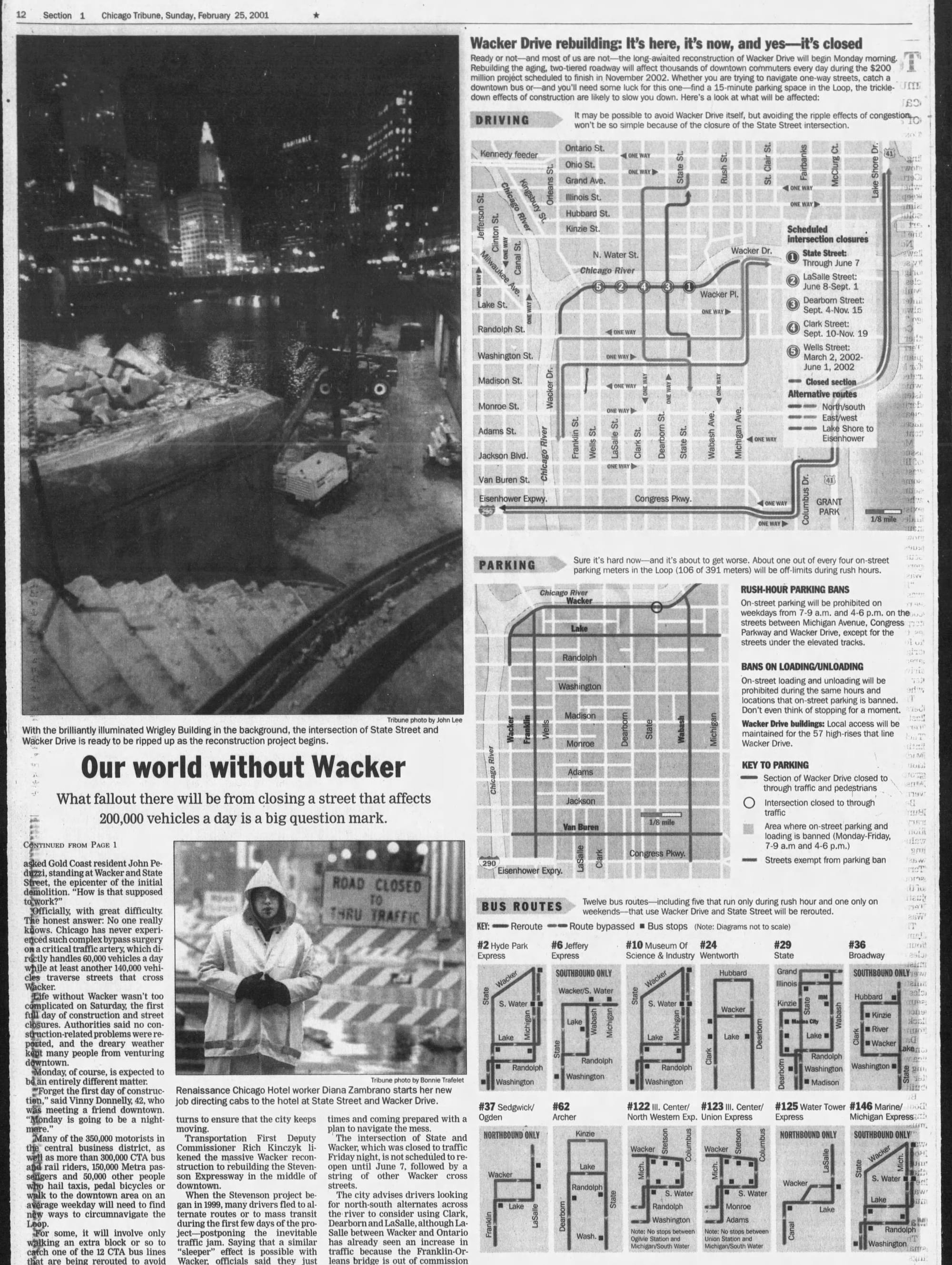
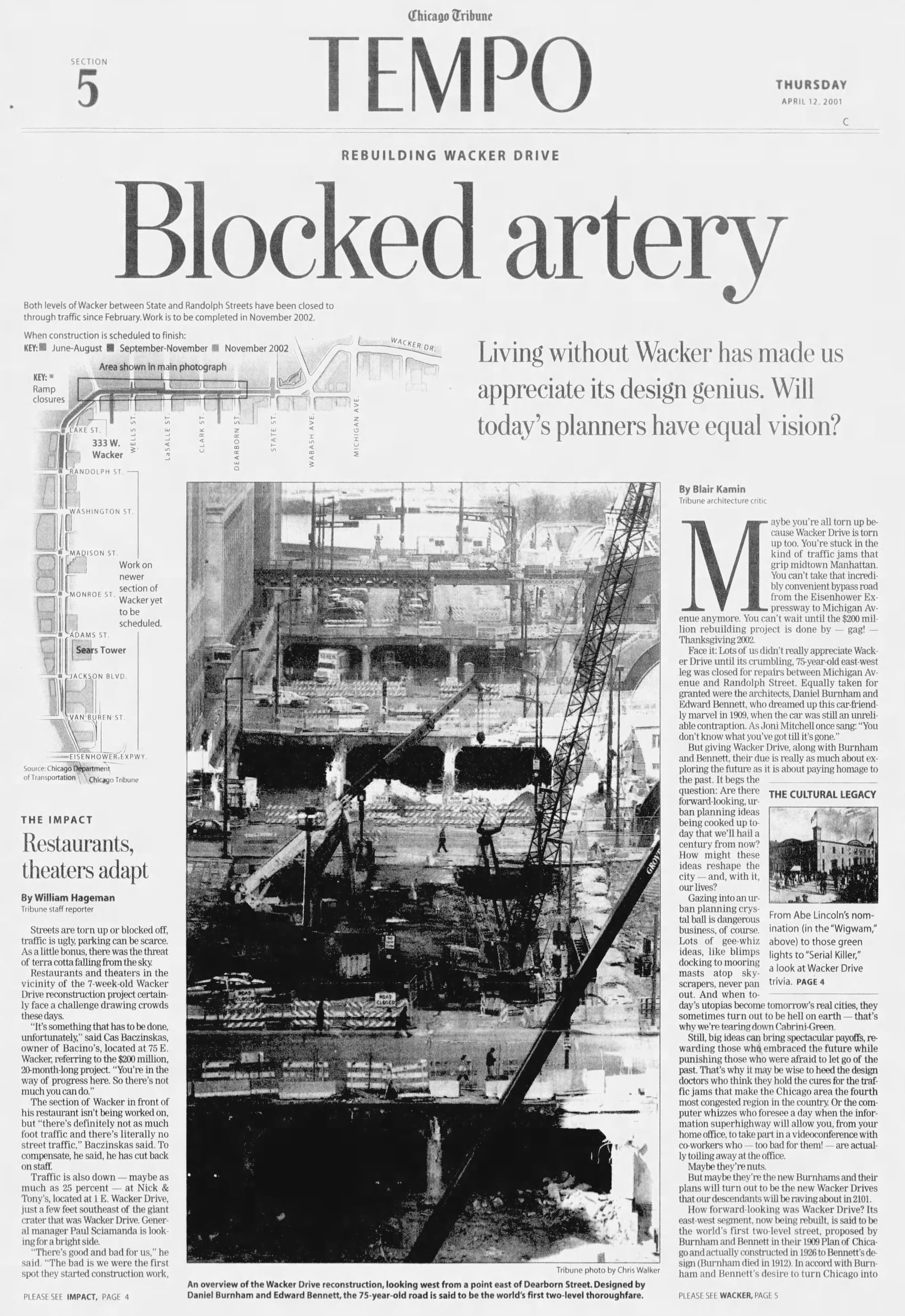
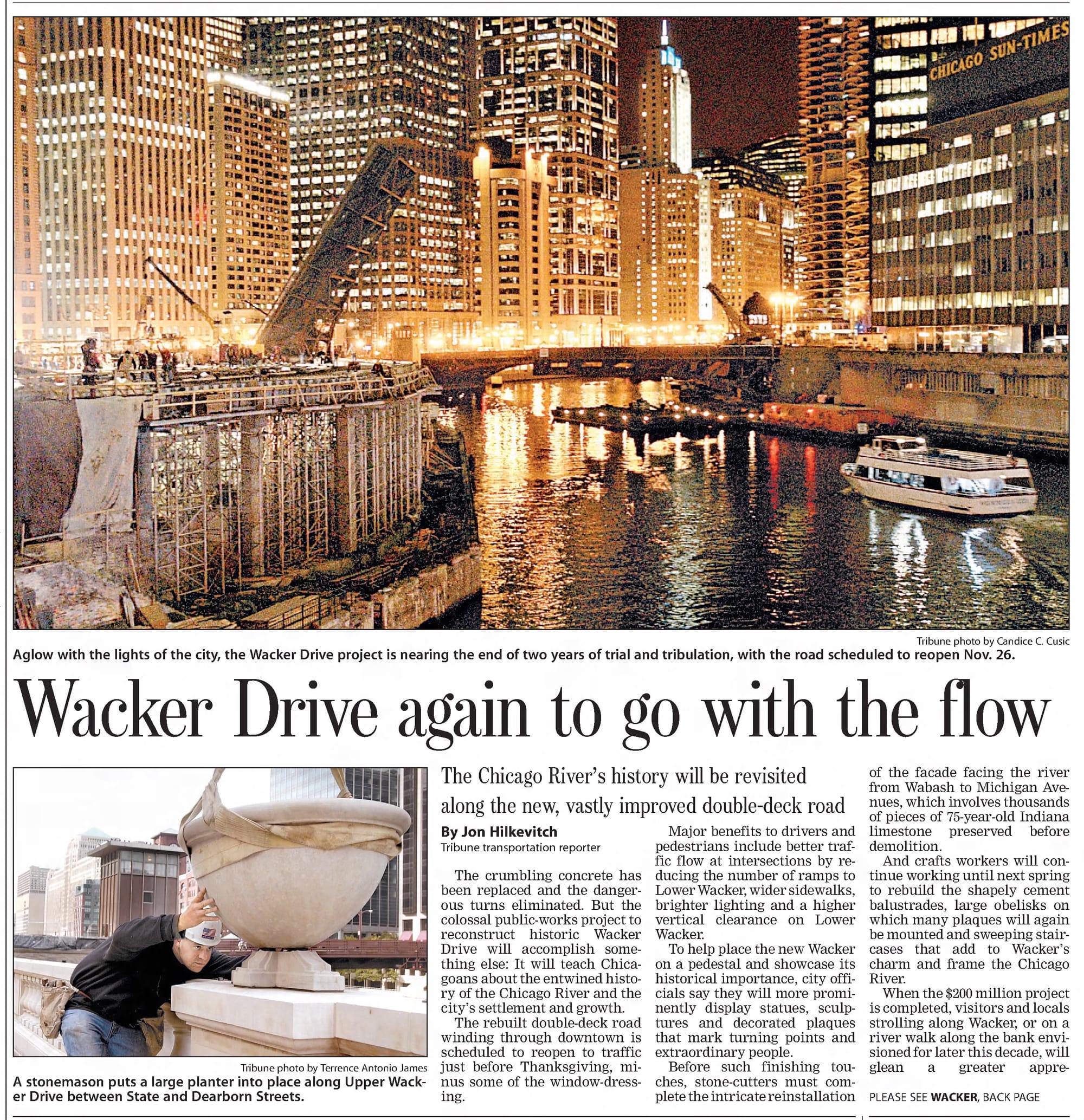
1988 view of the Riverwalk west from Columbus, C. William Brubaker, UIC via Chicago Collections | late 1990s and early 2000s Chicago Tribune articles on Revive Wacker Drive
A modernization project for a roadway that dated back to the Model T, Revive Wacker Drive rebuilt and modernized a street struggling with crumbling concrete supports below and an upper level sagging under ever-heavier vehicles. It reduced the number of ramps, widened sidewalks, and increased height clearances on Lower Wacker. To create space for the riverwalk, Wacker Drive was moved 50 feet south at Wabash, shrinking Heald Square into a wedge-shaped concrete median. The Three Patriots, designated a city landmark in 1971, moved a few dozen feet northeast to the corner of Wacker and Wabash.
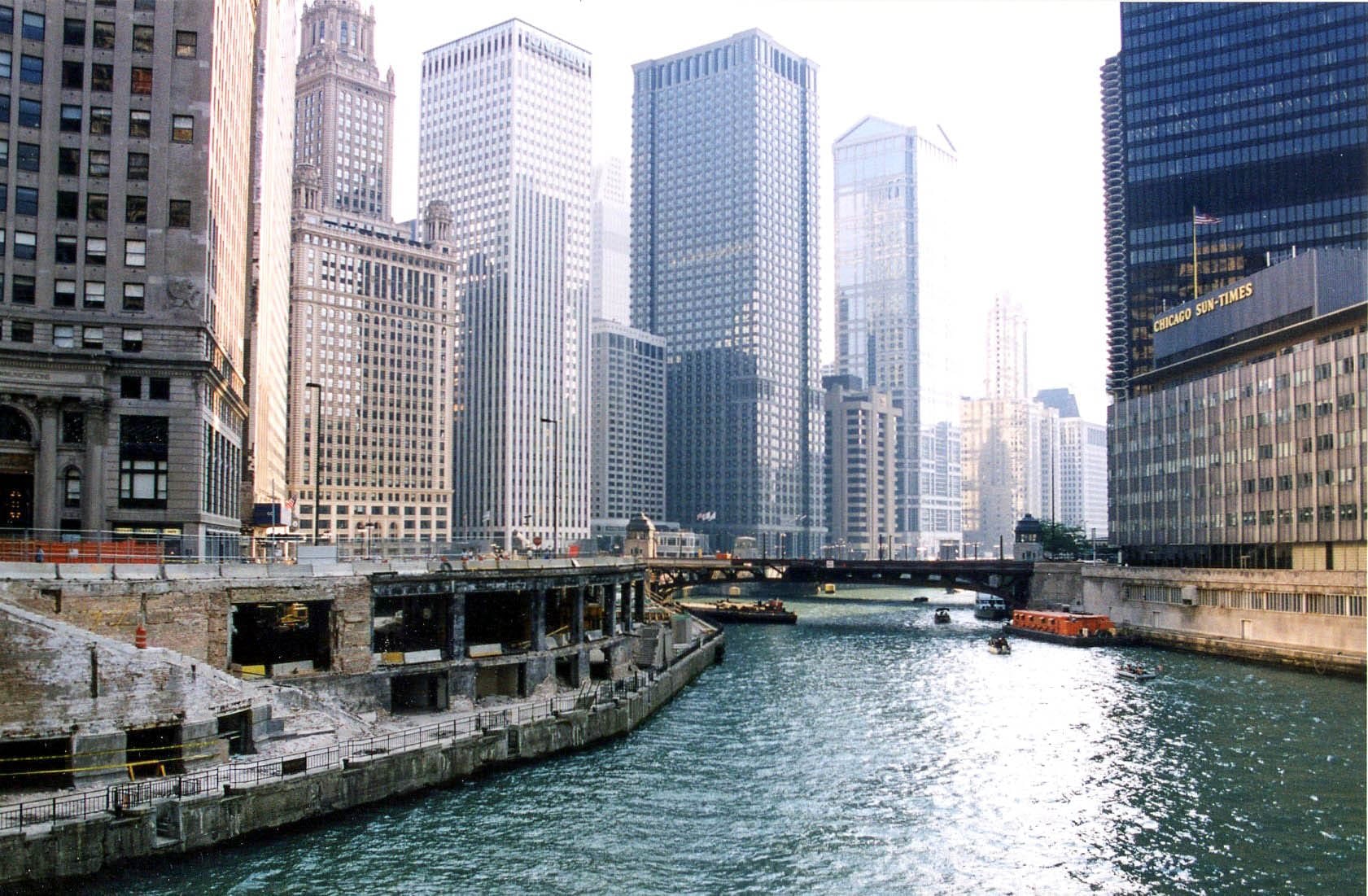
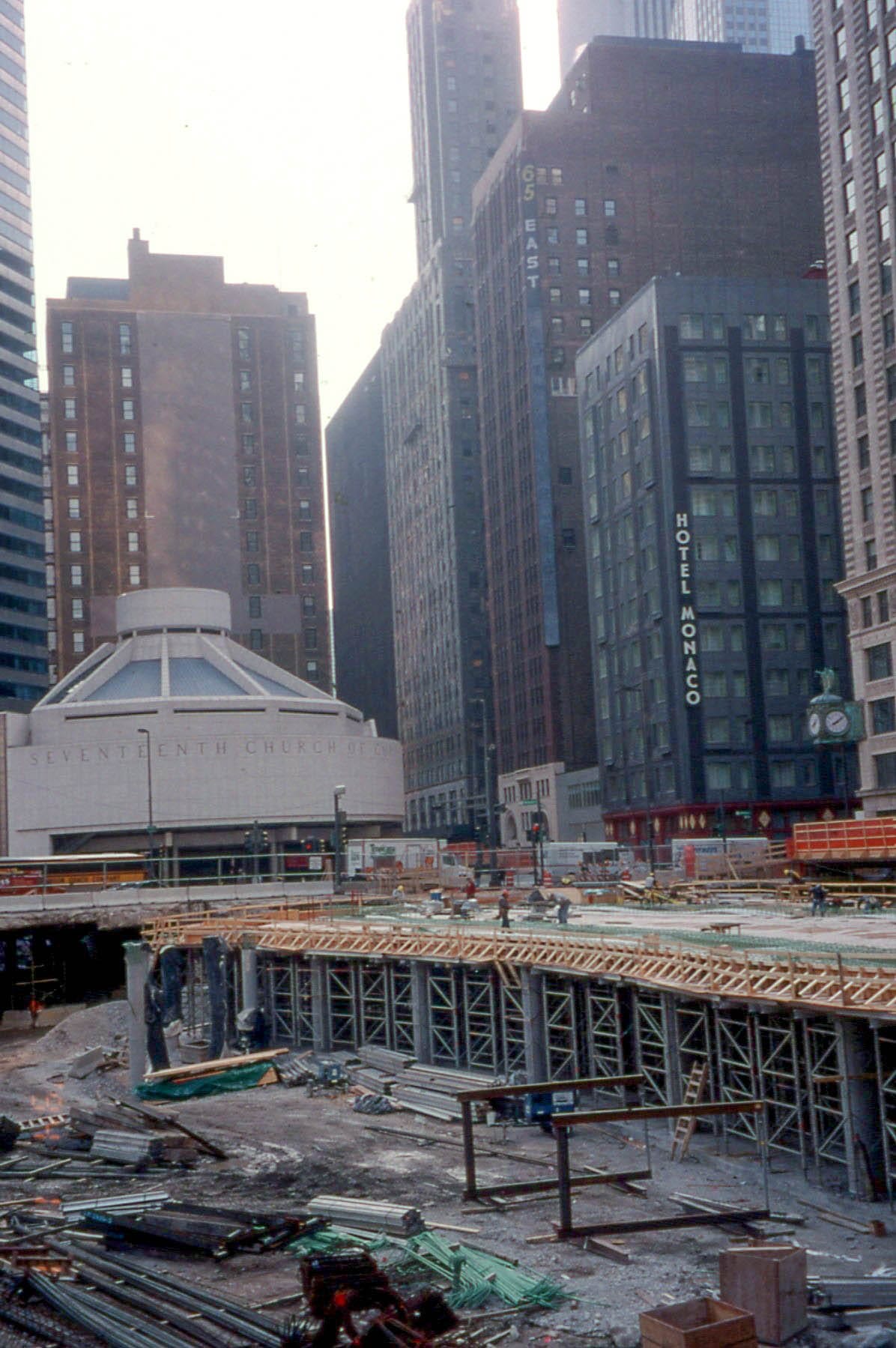
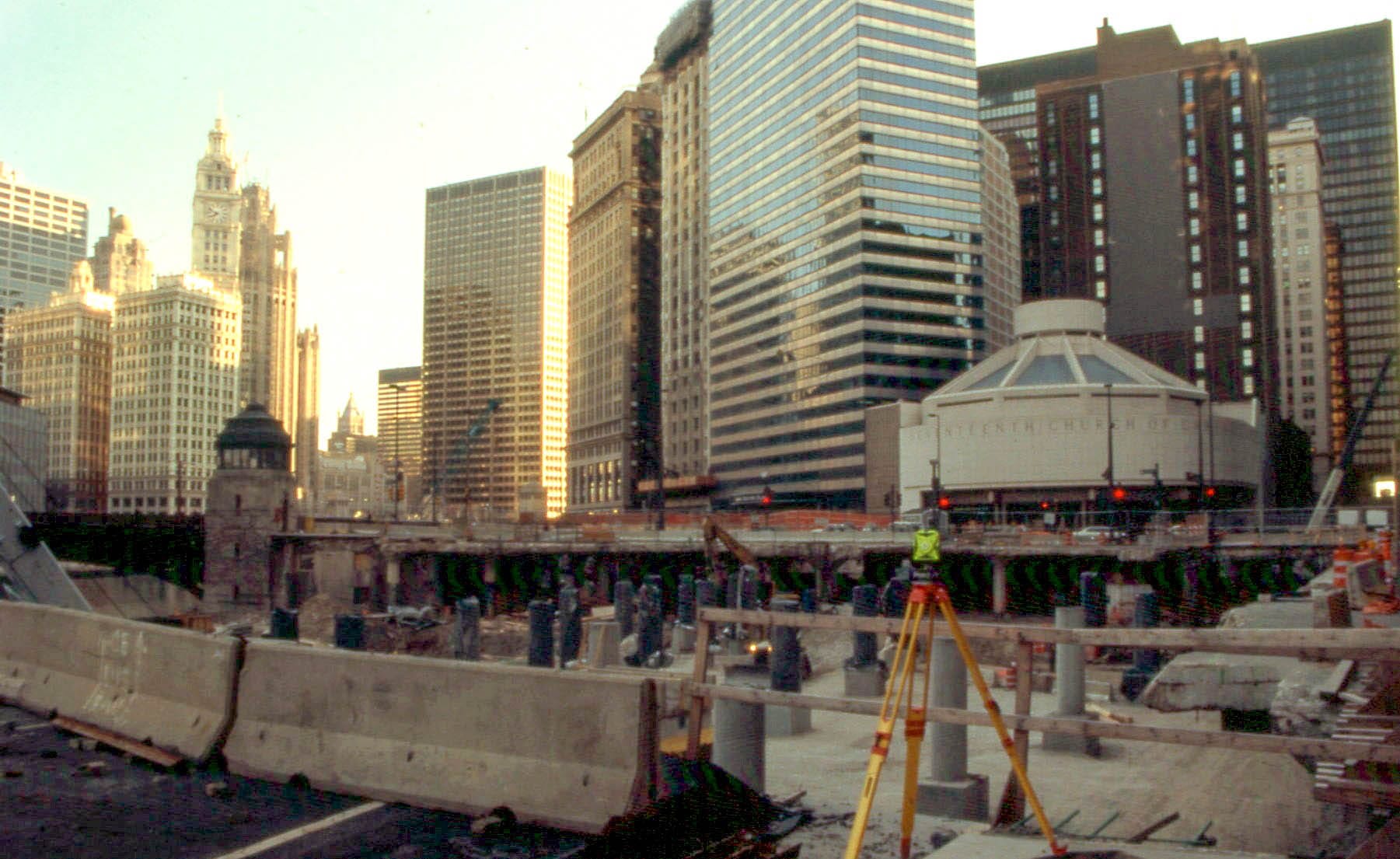
Wacker Drive reconstruction looking west, 2002, David Wilson, Wikimedia Commons | Reconstruction looking east, 2002, David Wilson, Wikimedia Commons | Reconstruction with the Wrigley Building, etc., 2002, David Wilson, Wikimedia Commons
The thing that both confuses the perspective here and also underlines the changing streetscape is the position of the obelisks. The firms working on Revive Wacker Drive attempted to save as much of the limestone ornament as possible and reinstall it (they managed 60%), which explains how these two migrated a few dozen feet. The space opened up by moving Wacker Drive created one of the deeper, older sections of the riverwalk. Way more lush than it was in the 1960s, mature trees now extend onto street level from the Ross Barney + Jankowski-designed riverwalk space, which is also home to the Chicago Vietnam Veterans Memorial.

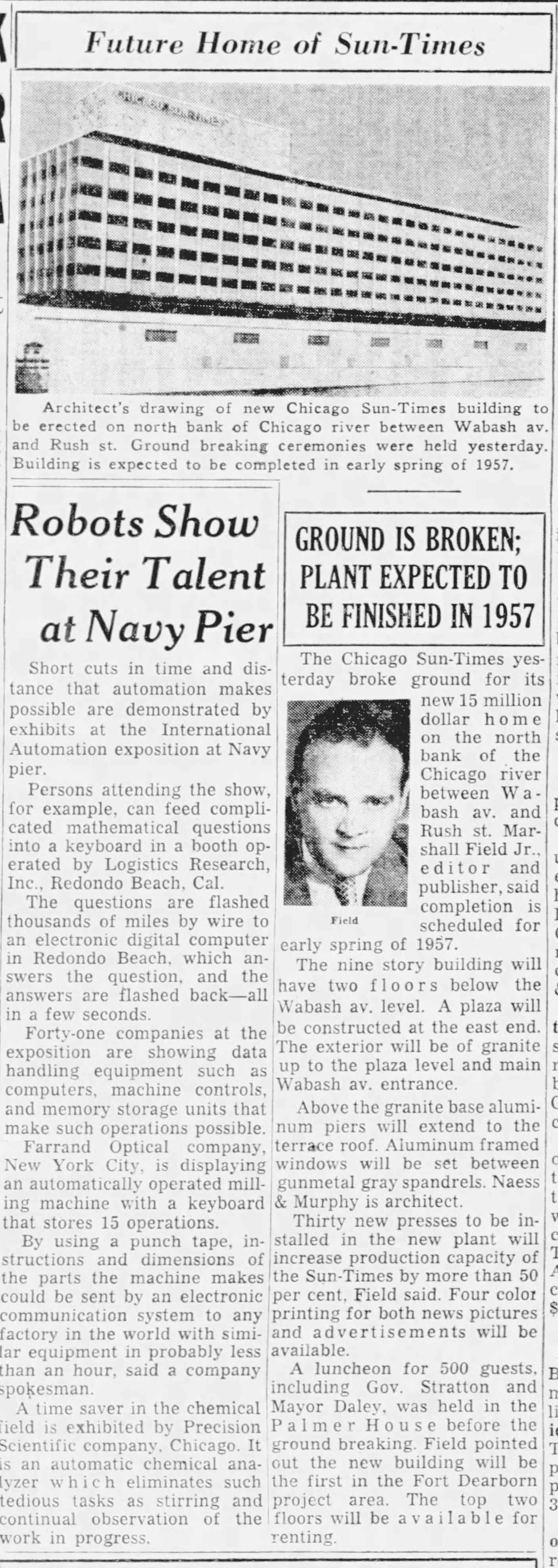
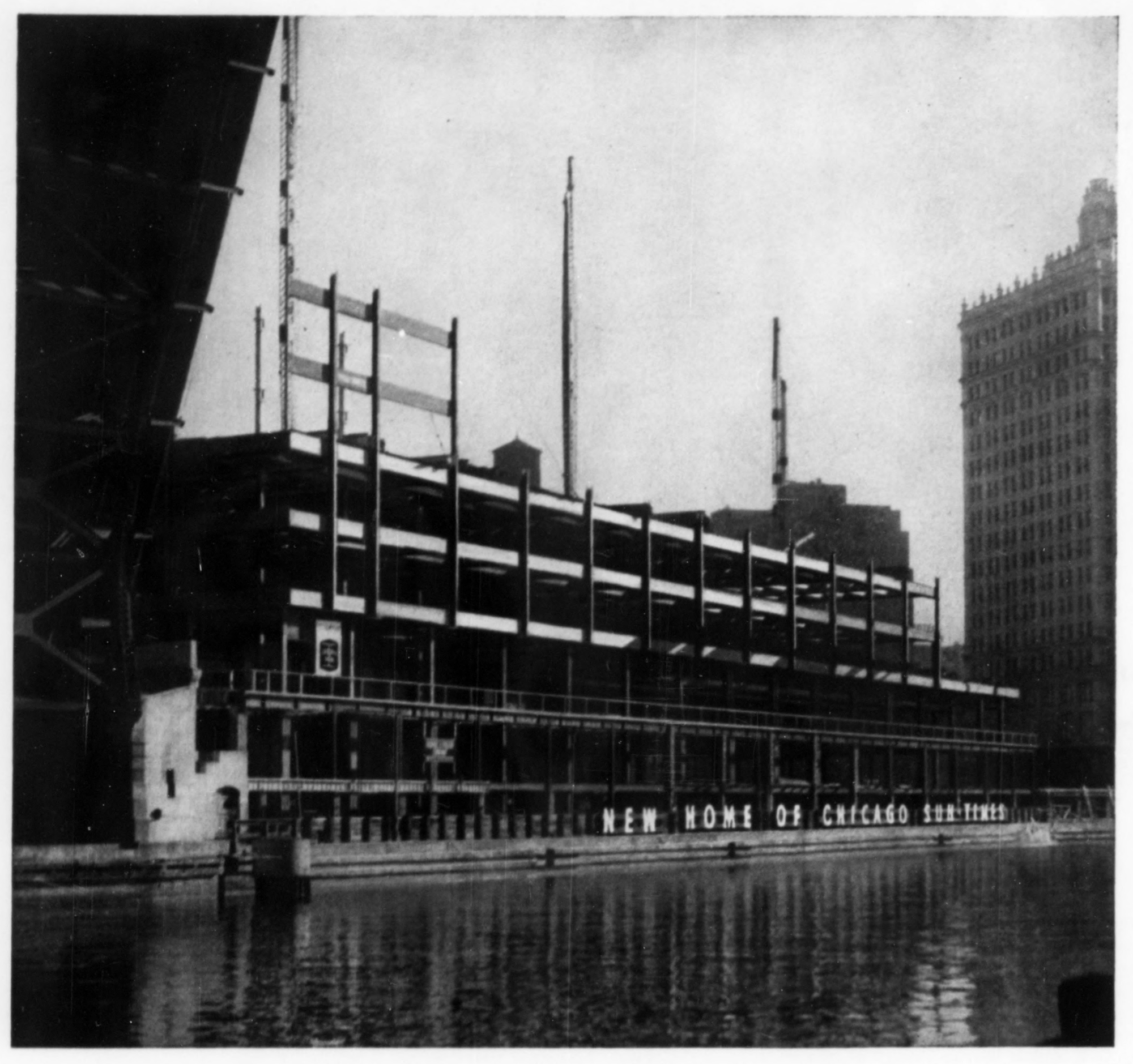
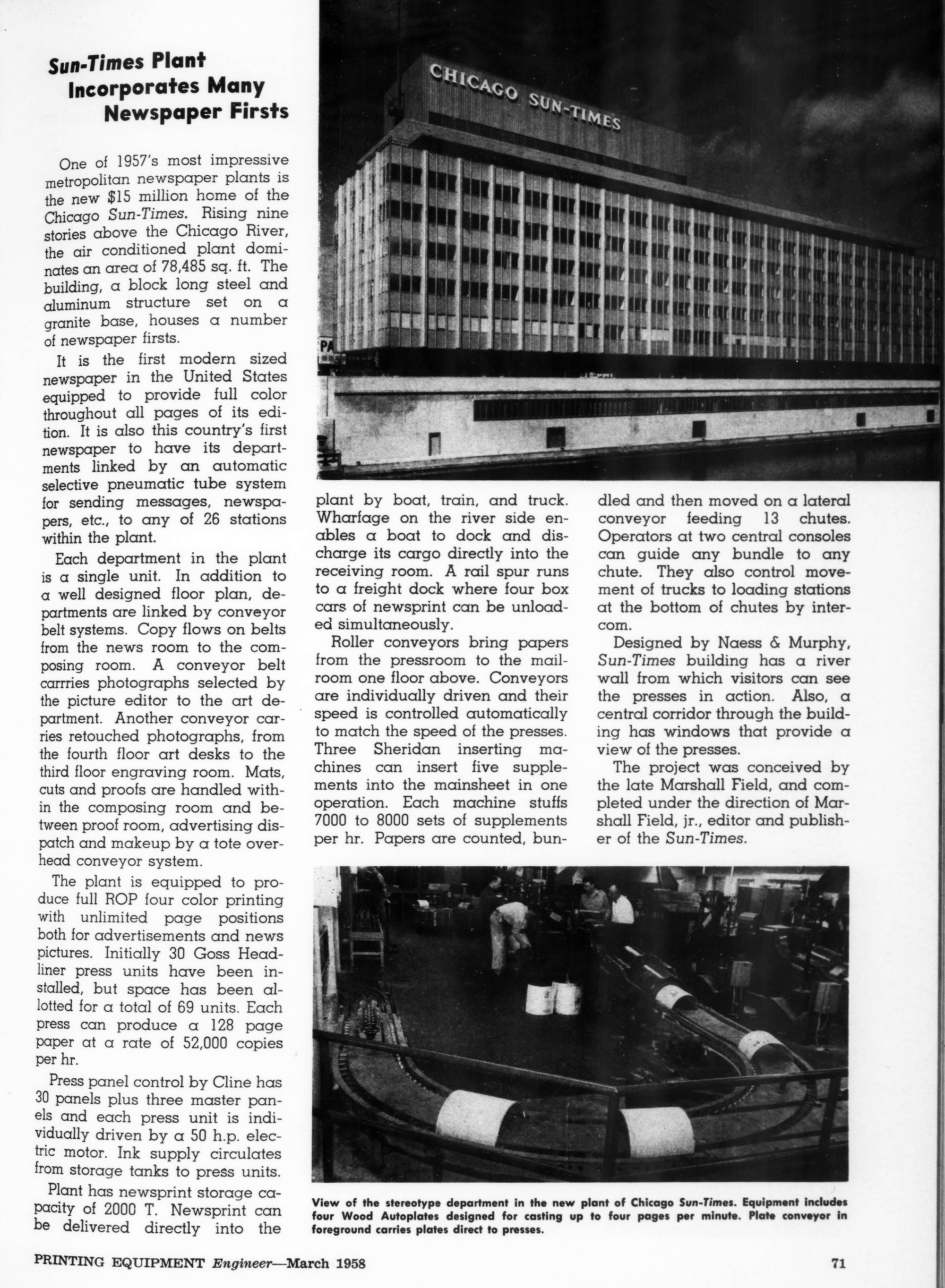
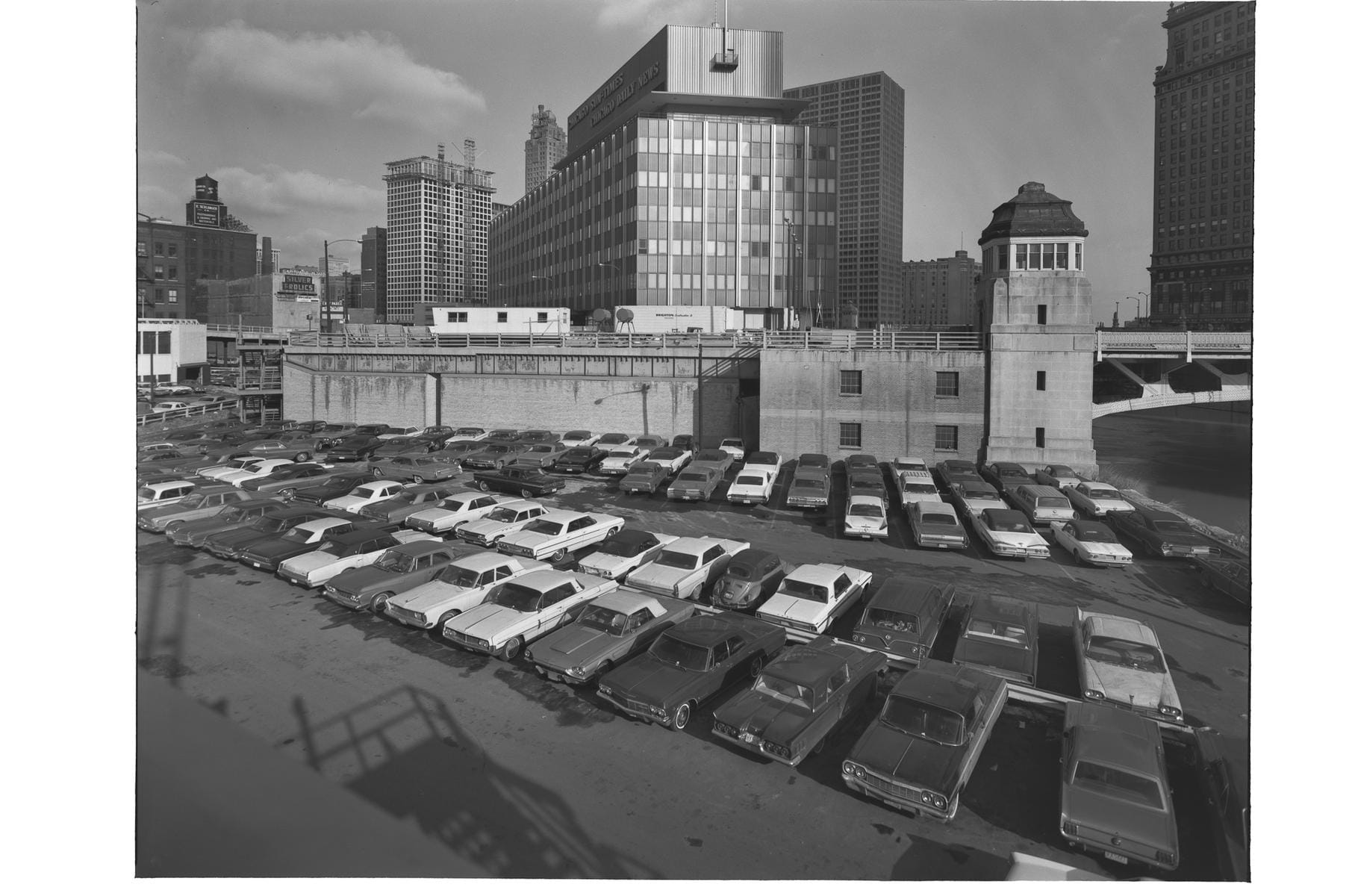
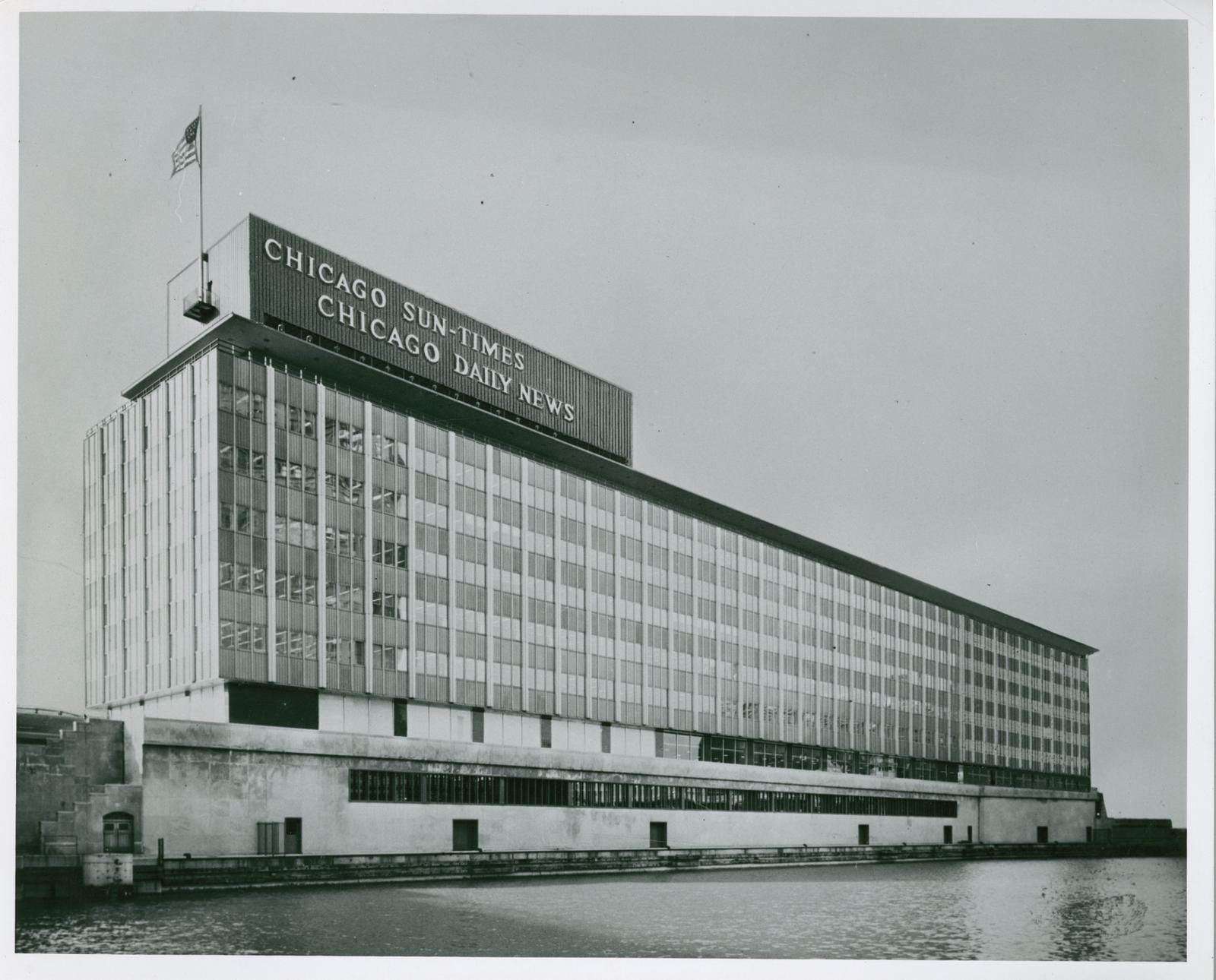
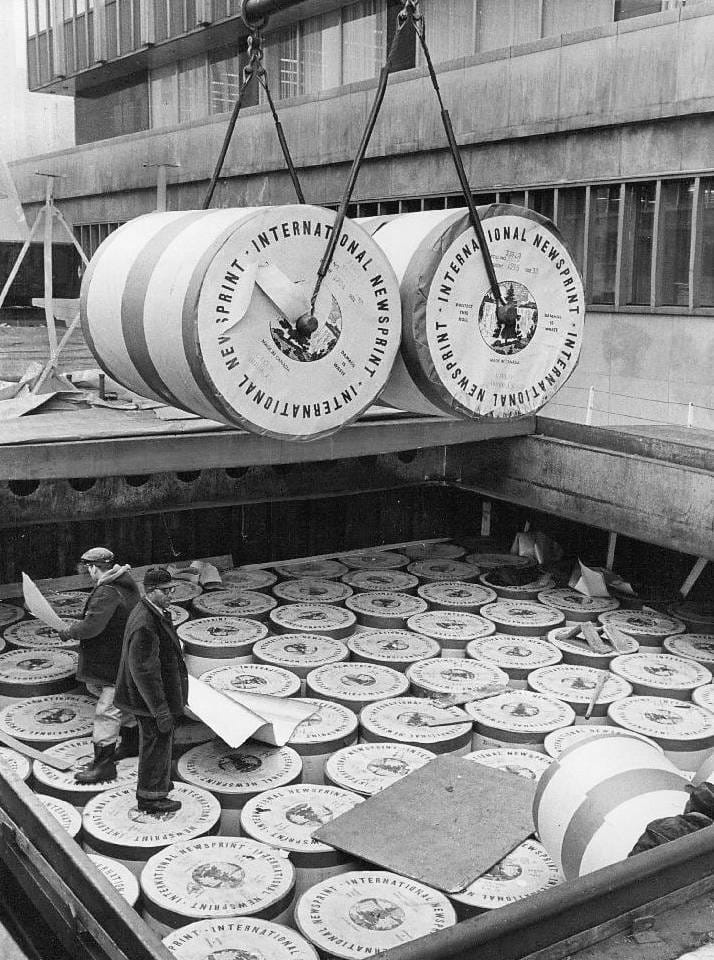
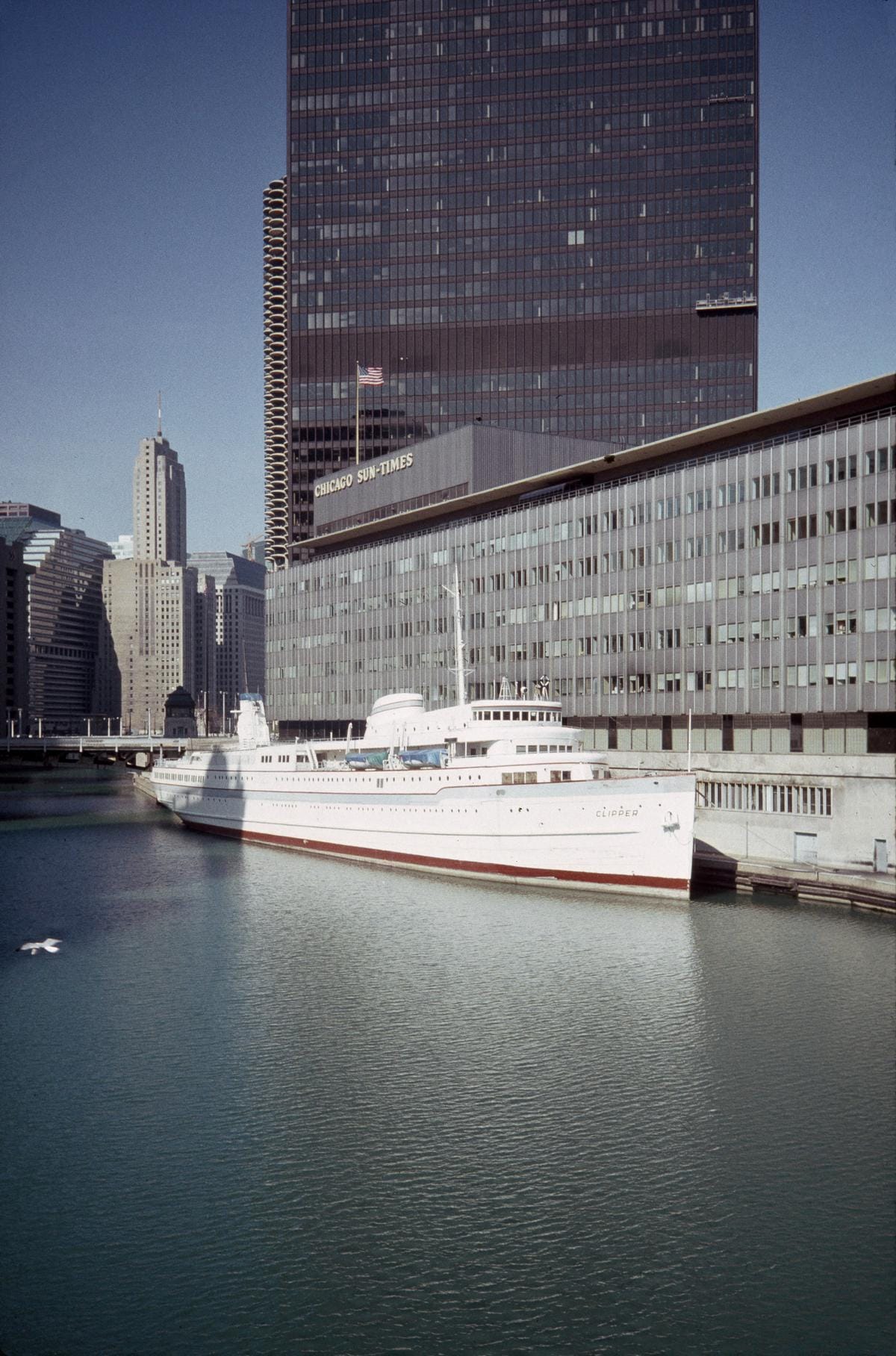
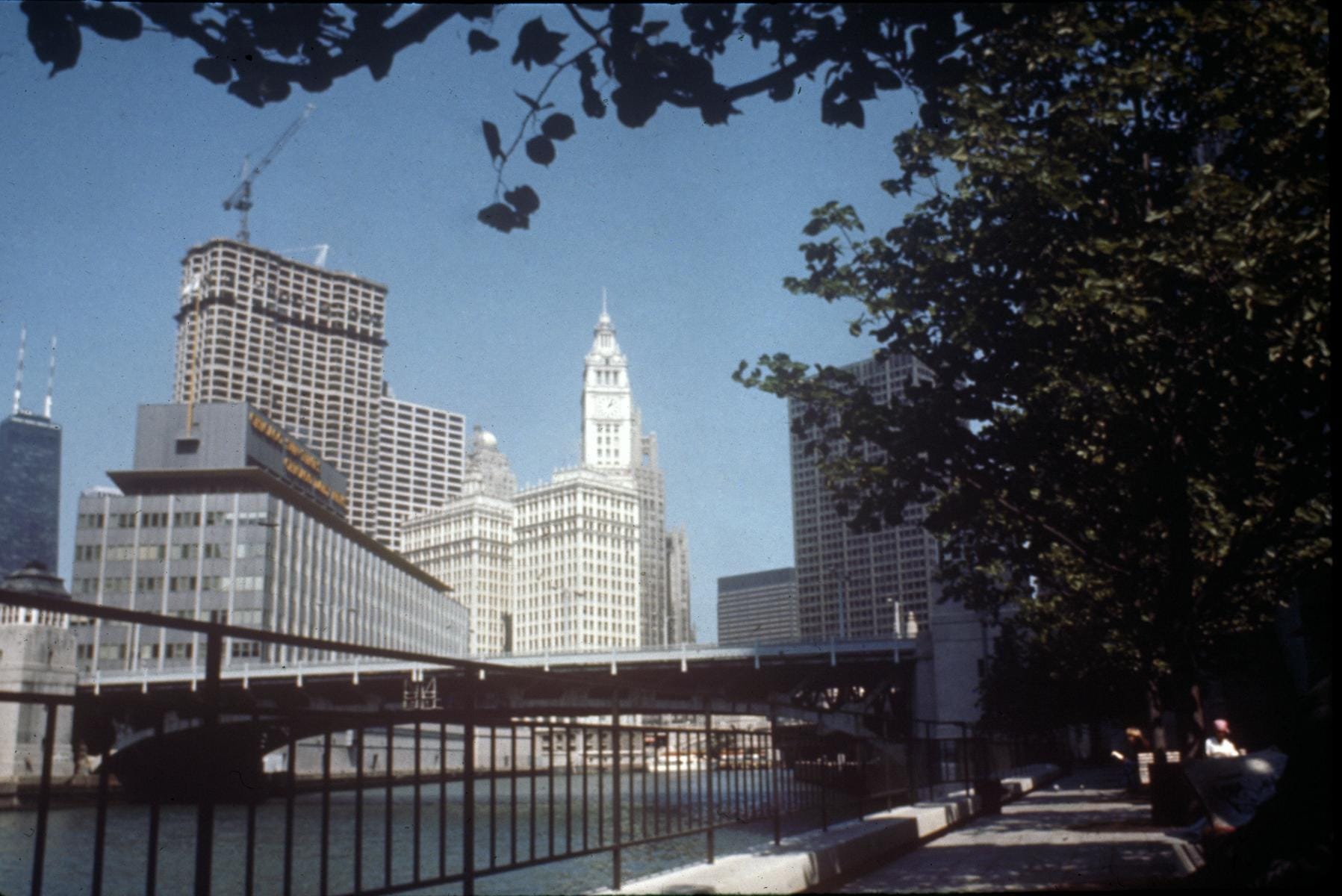
1954, Fields Enterprises buys the lot | 1955, "Future Home of the Sun-Times" | Construction photo in a Bethlehem Steel ad, 1956, the Architectural Record, the Internet Archive | in Printing Production in 1958, the Internet Archive | Sun-Times Building and parking lot, 1970, UIC via Chicago Collections | late 1950s, Newberry Library via Chicago Collections | newsprint unloading, 1962, the Chuckman Collection | from the riverwalk, 1976, C. William Brubaker, UIC via Chicago Collections | with a ship, 1989, C. William Brubaker, UIC via Chicago Collections
A few words on the Sun-Times Building. Designed by Sigurd Naess of Naess & Murphy–who were fresh off the Prudential Building–architect Stanley Tigerman once called it “that funny little fucked-up building”. It was a workhorse of a building, with paper delivered by barge and rail to the printing plant in the basement.
When it was built, the Sun-Times was owned by the Marshall Field family. Turns out that in addition to the department store that made their fortune, the Fields also ran a little media and publishing empire–they also owned publishing house Simon and Schuster and the Chicago Daily News. Like every newspaper, the Sun-Times went through some tough years after leaving their riverside building (...unrelated to them selling their building to the softest, stupidest bully in the country). The paper is now part of an intriguing experiment in non-profit journalism after they were taken over by Chicago’s NPR affiliate WBEZ and Chicago Public Media–it’s worth becoming a member.
Production Files
Further reading:
- "Ode to an Eyesore" in Chicago Mag, 2004
- "Wabash Plaza could be start of great space" in the Chicago Tribune, 2005
- Lynn Becker on a fire in the CST Building in 2004
- Revive Wacker Drive in Roads & Bridge in 2001
- The Chicago Monuments Project on the Heald Square Monument
- The Chicago Jewish Historical Society on the Three Patriots in 2021 (pdf)
- In a very unexpected crossover, Vincent P. Falk–the guy who used to wear colorful suits and wave at the tour boats–documented the entire Revive Wacker Drive project on his website as it reconfigured the street and relocated the Heald Square Monument
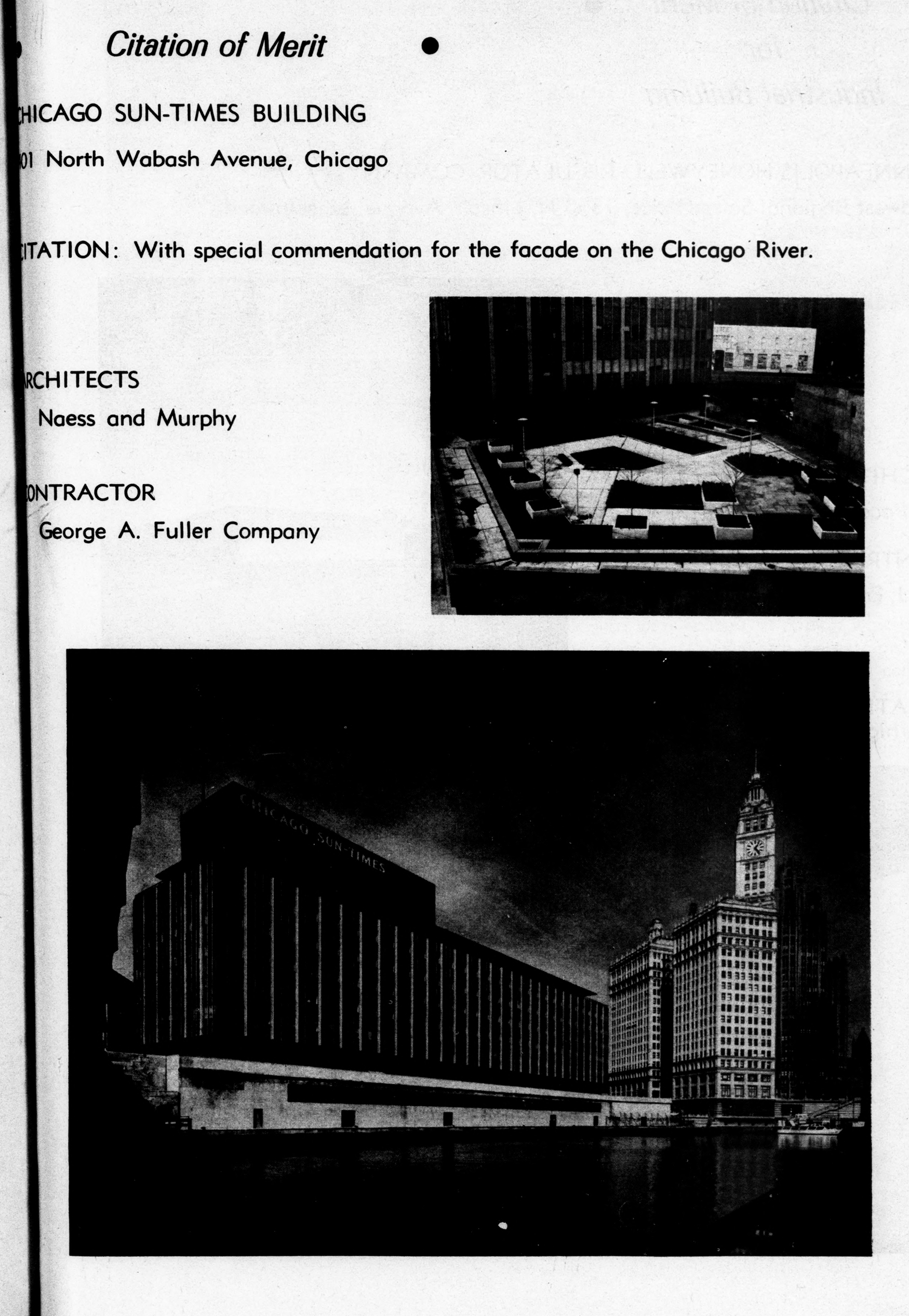
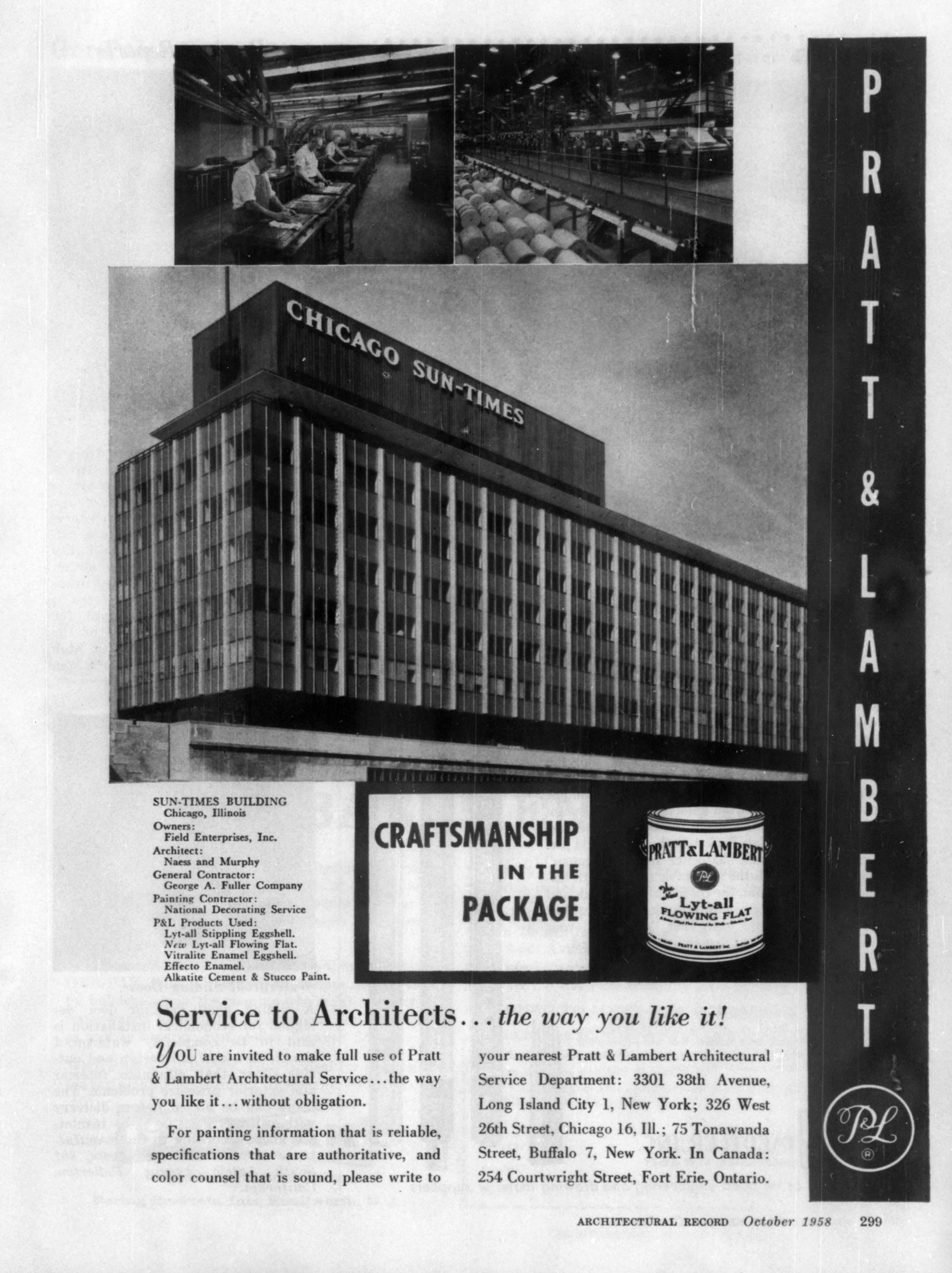
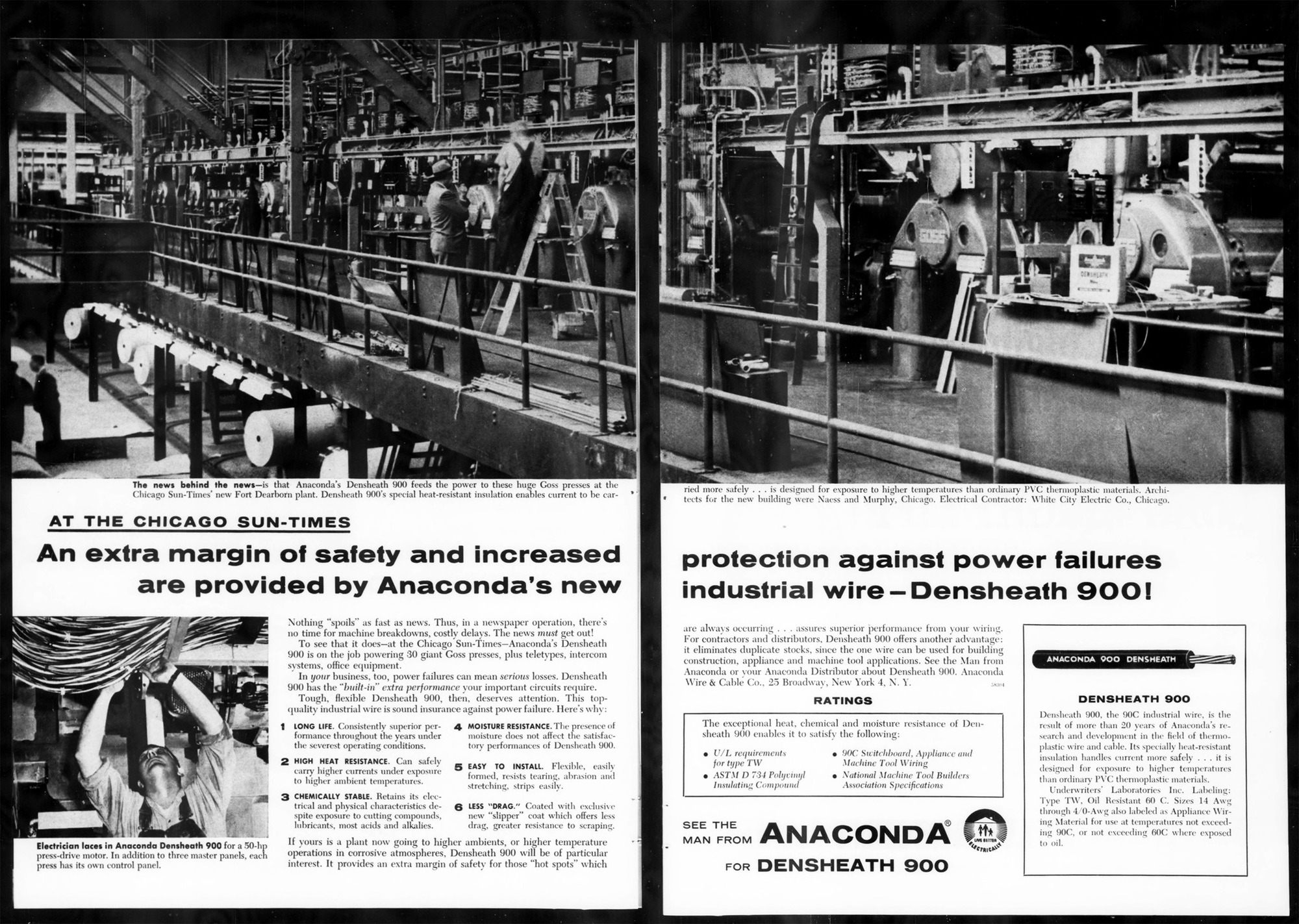
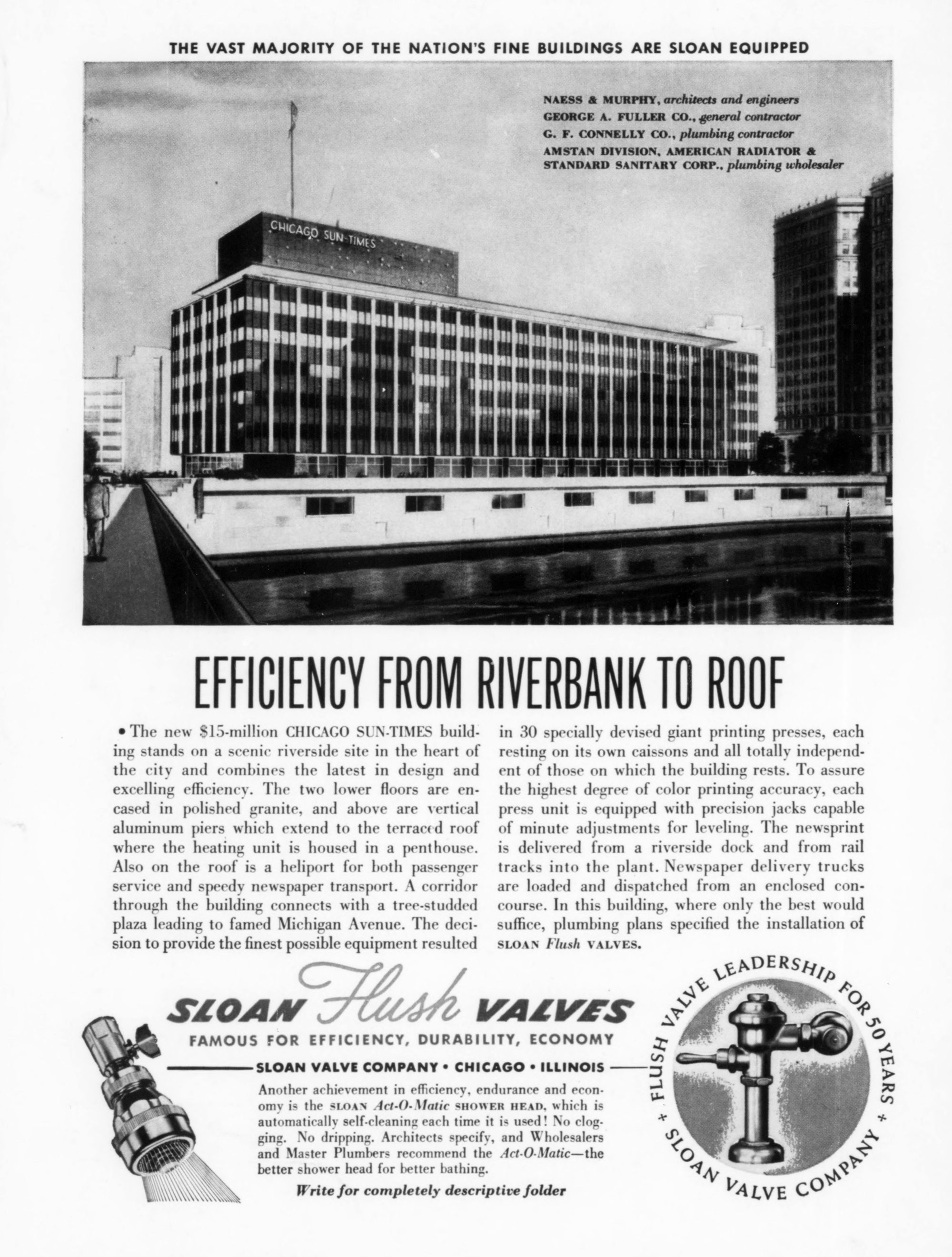
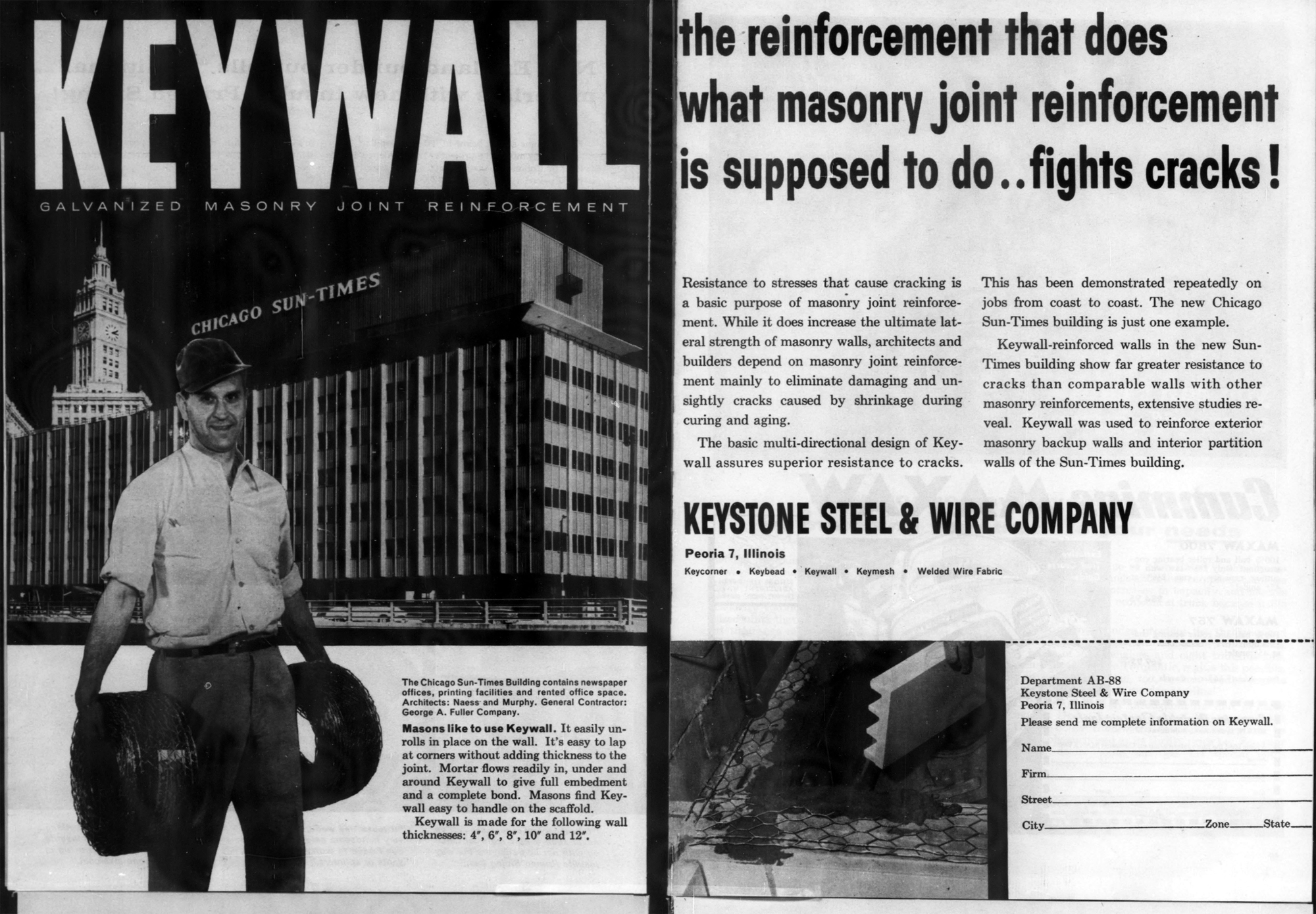
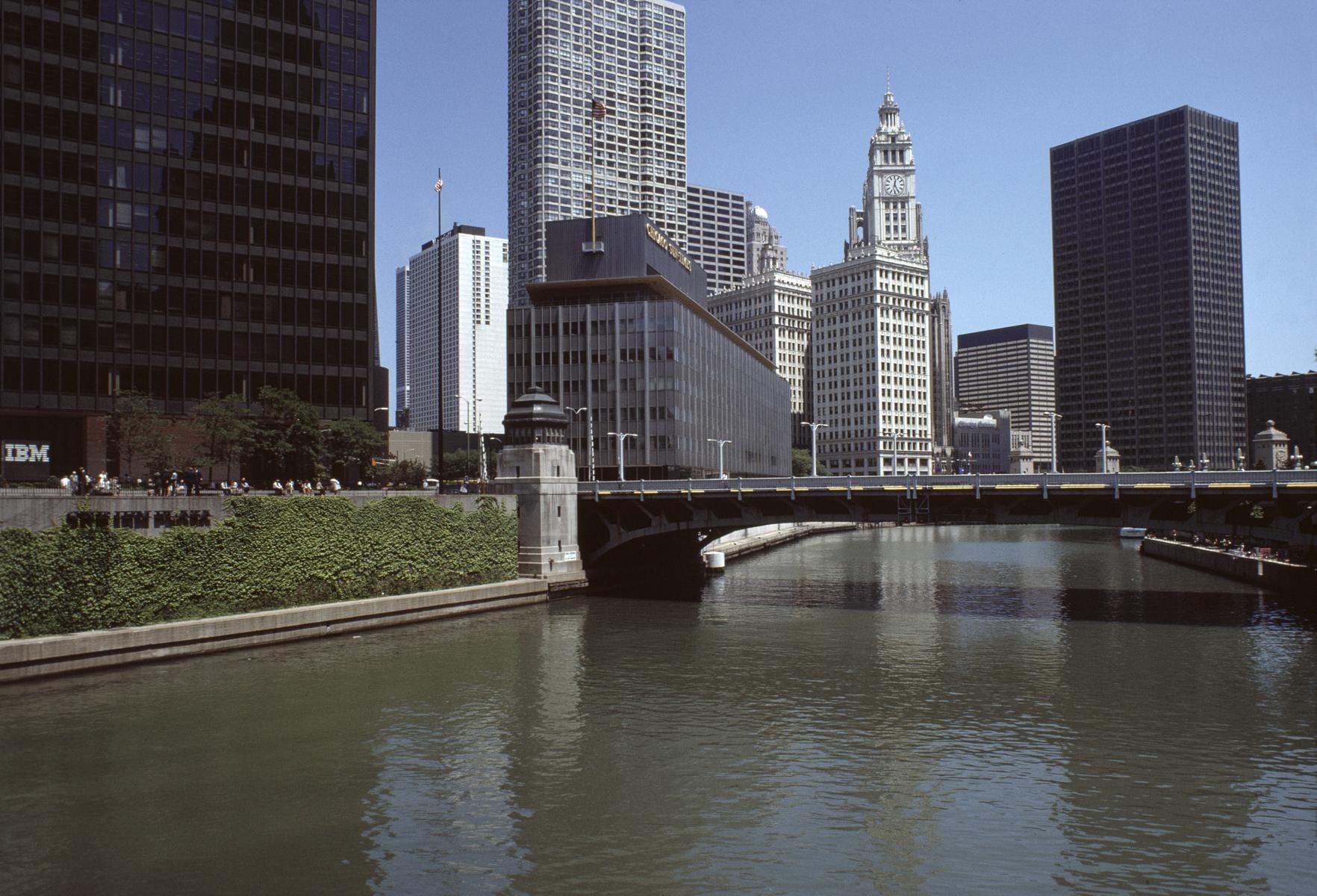
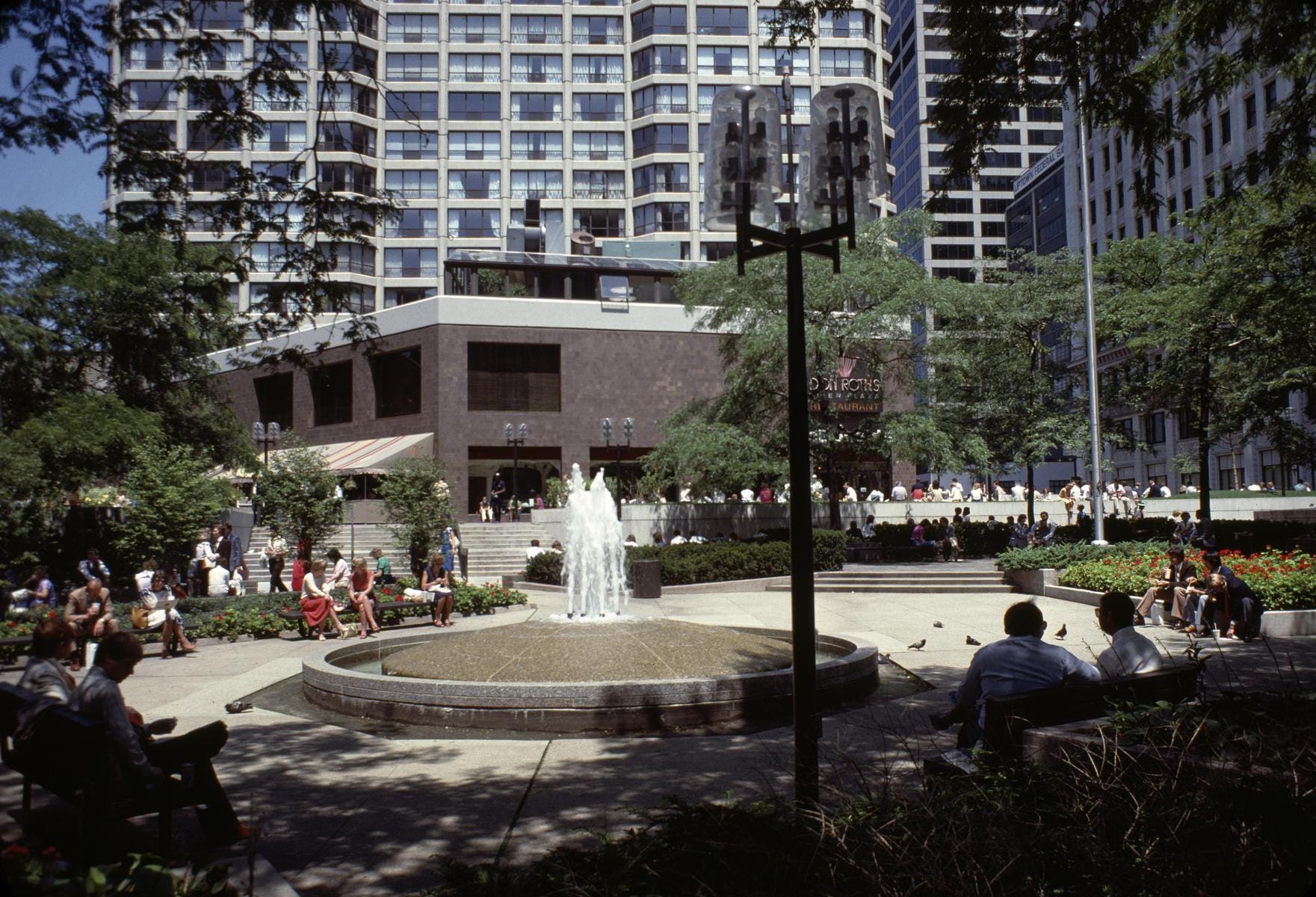
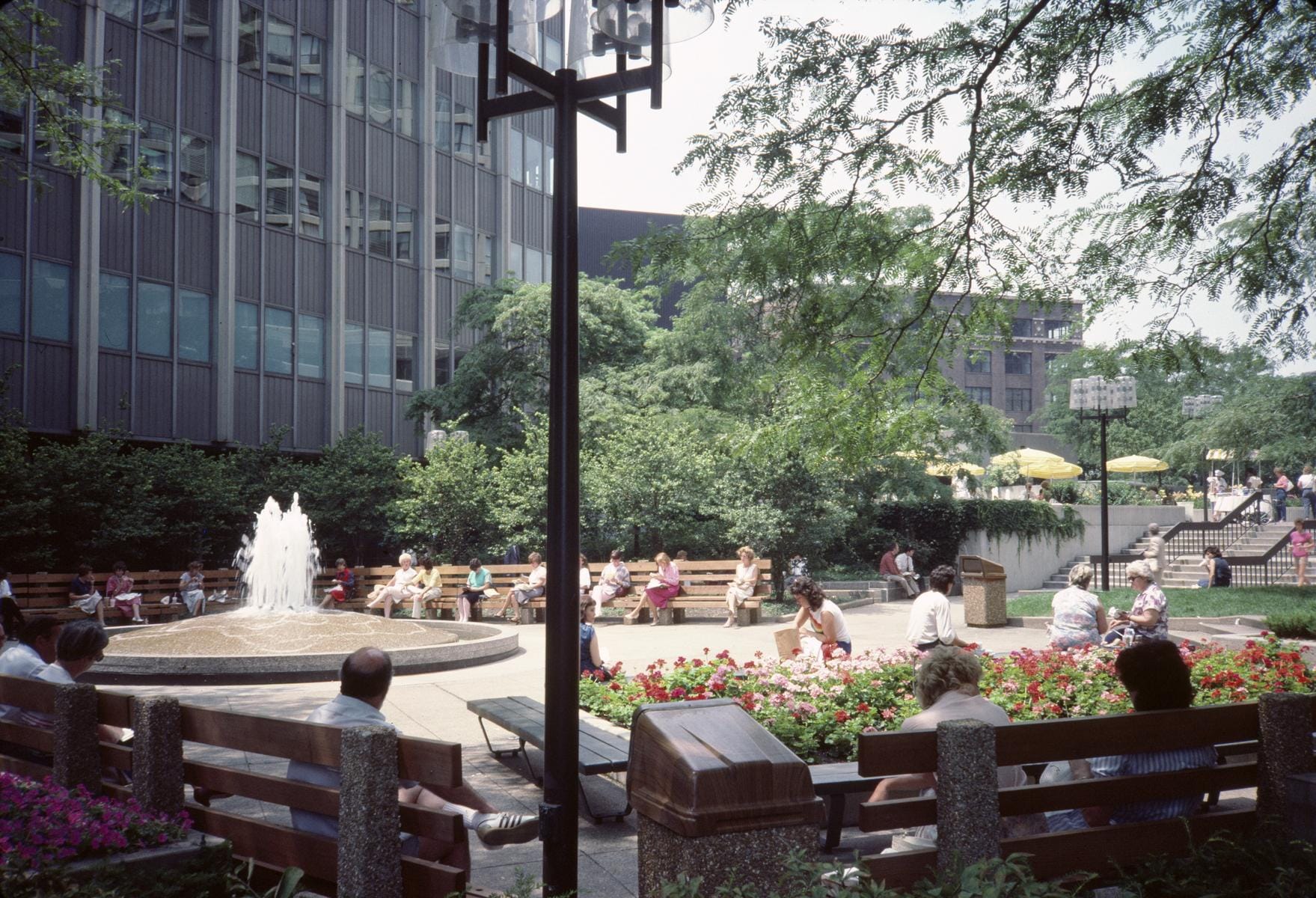
Citation of merit in Inland Architect in 1958, the Internet Archive | paint ad, 1958, the Architectural Record, the Internet Archive | Anaconda wire ad, 1958, Electrical Construction and Maintenance, the Internet Archive | Sloan valve ad, 1957, the Architectural Record, the Internet Archive | Keywall ad, 1958, Inland Builder, the Internet Archive | 1982, C. William Brubaker, UIC via Chicago Collections | plaza, 1982, C. William Brubaker, UIC via Chicago Collections | plaza, 1985, C. William Brubaker, UIC via Chicago Collections
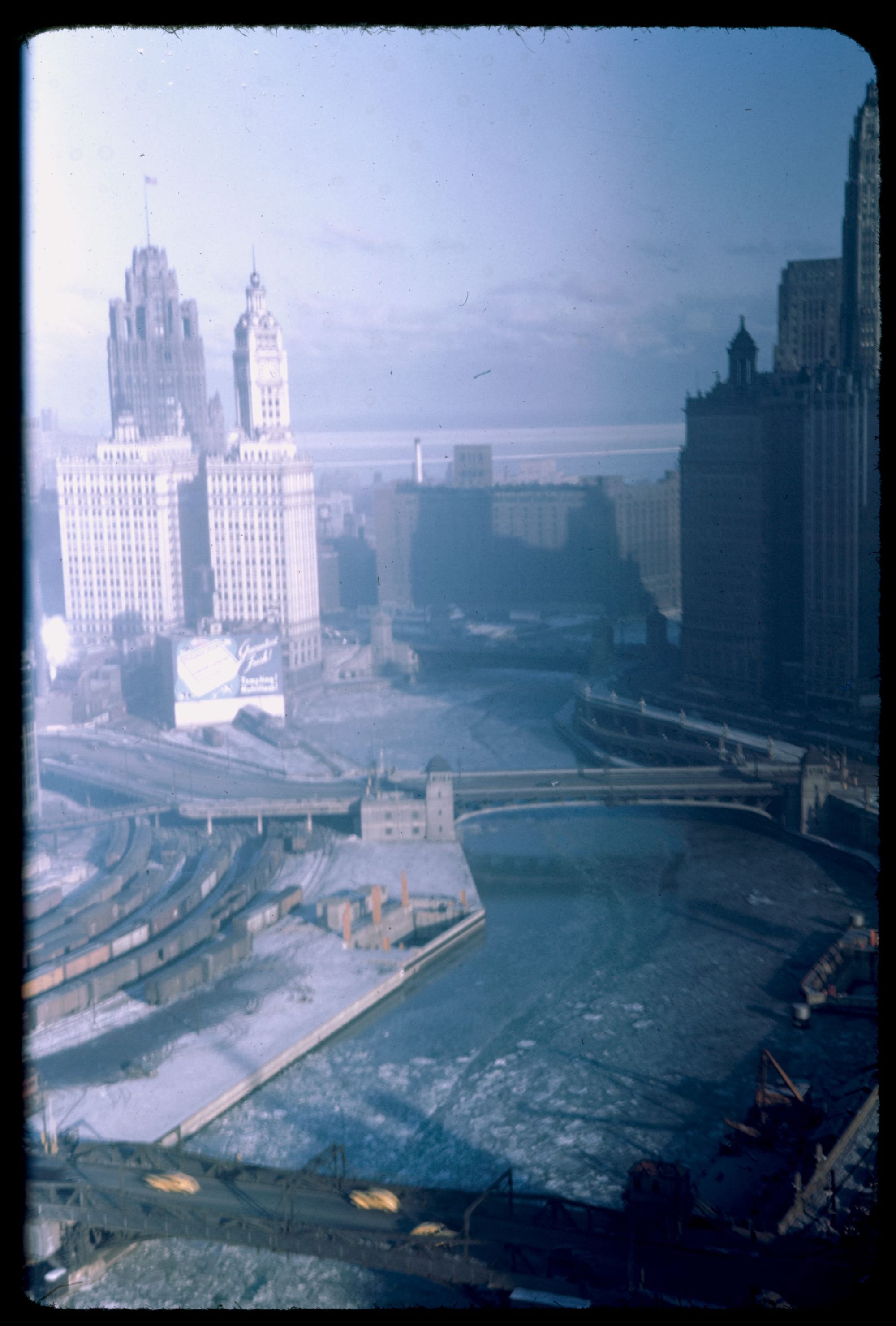
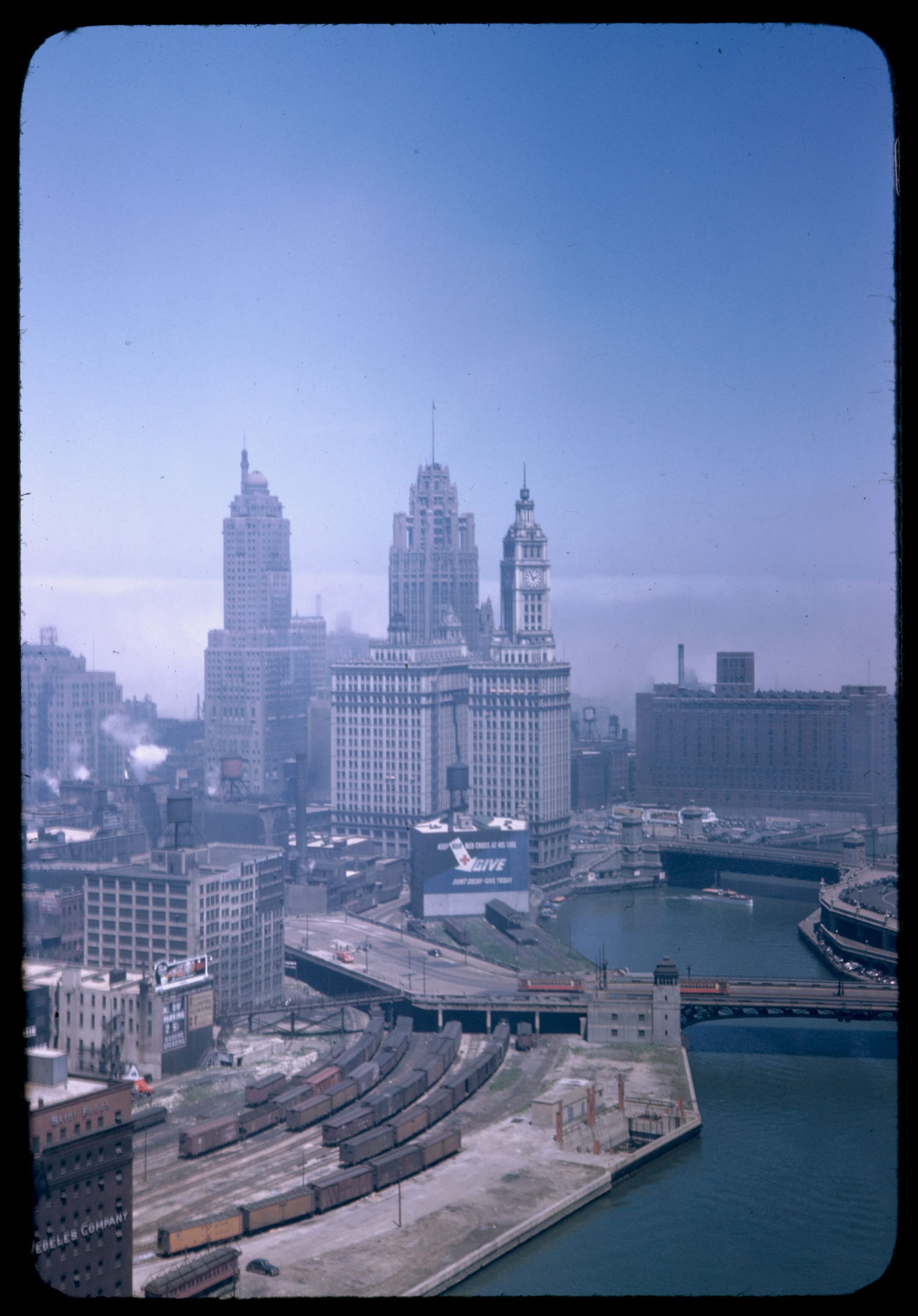
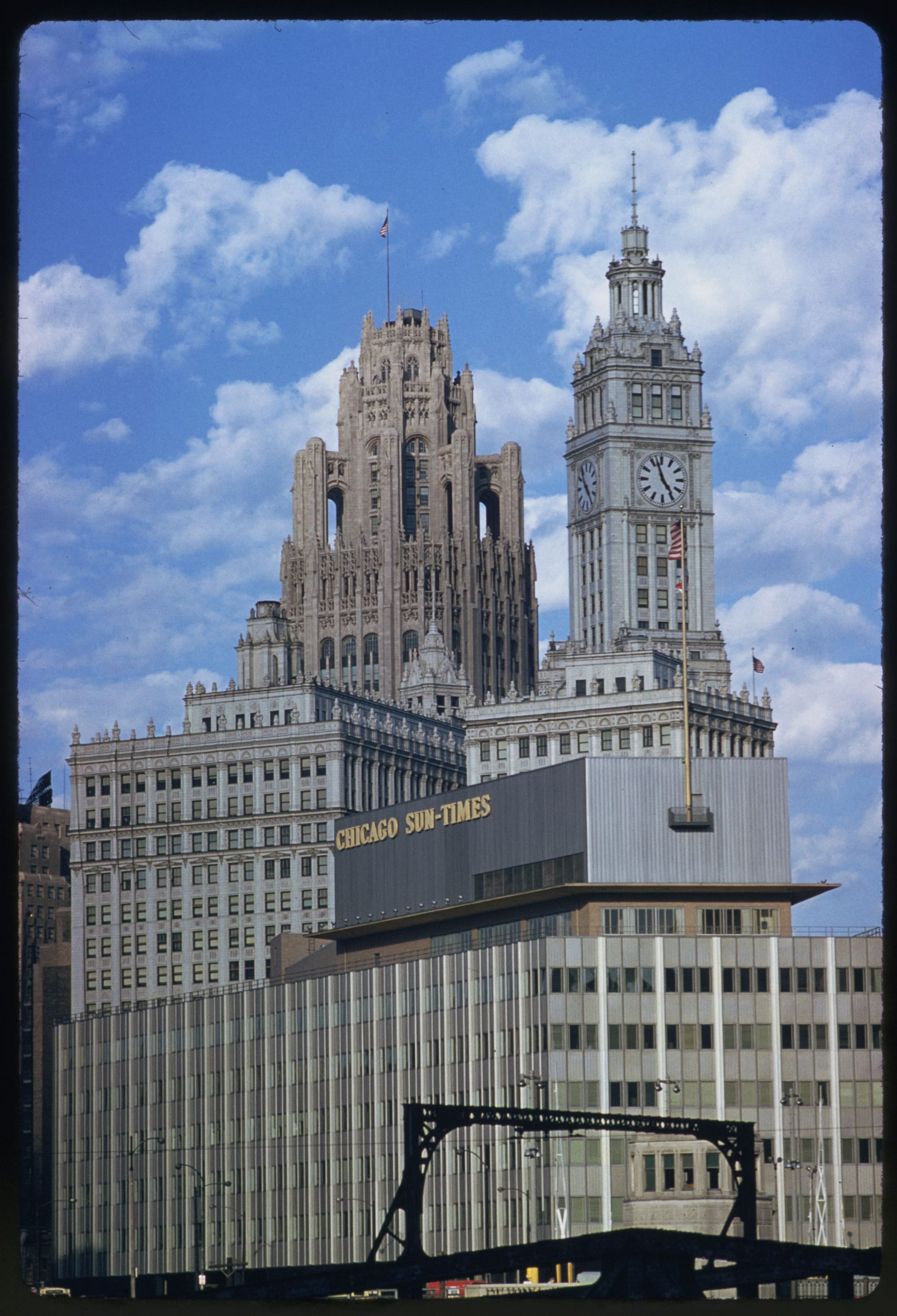
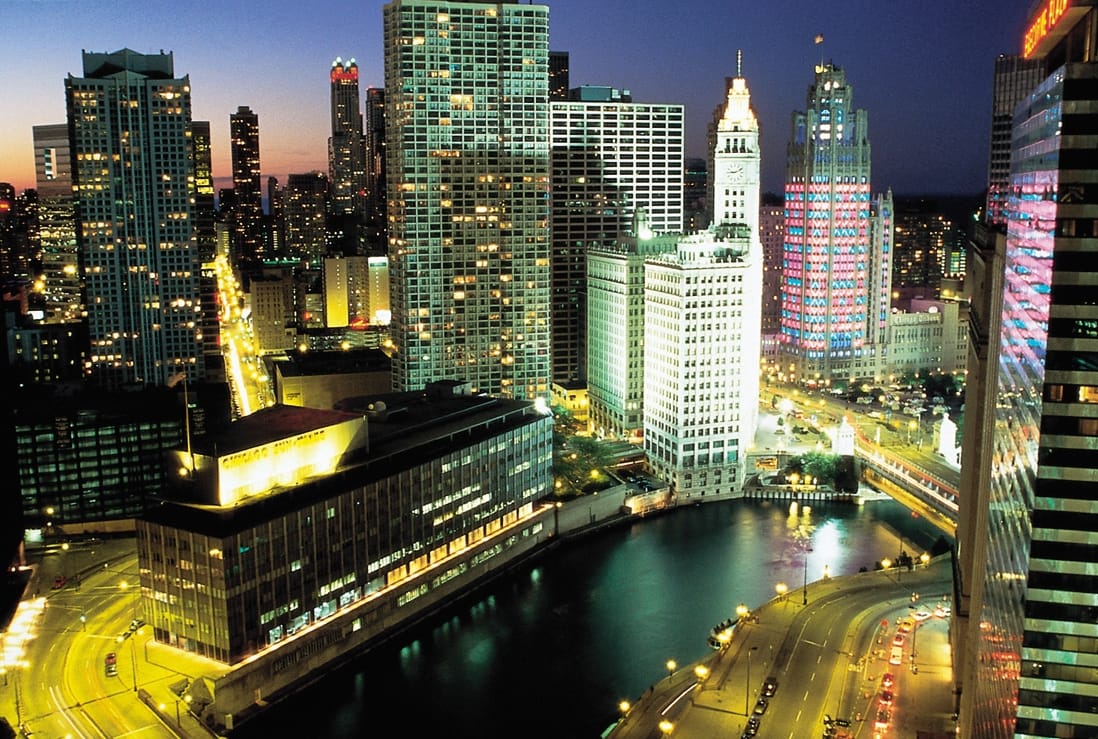
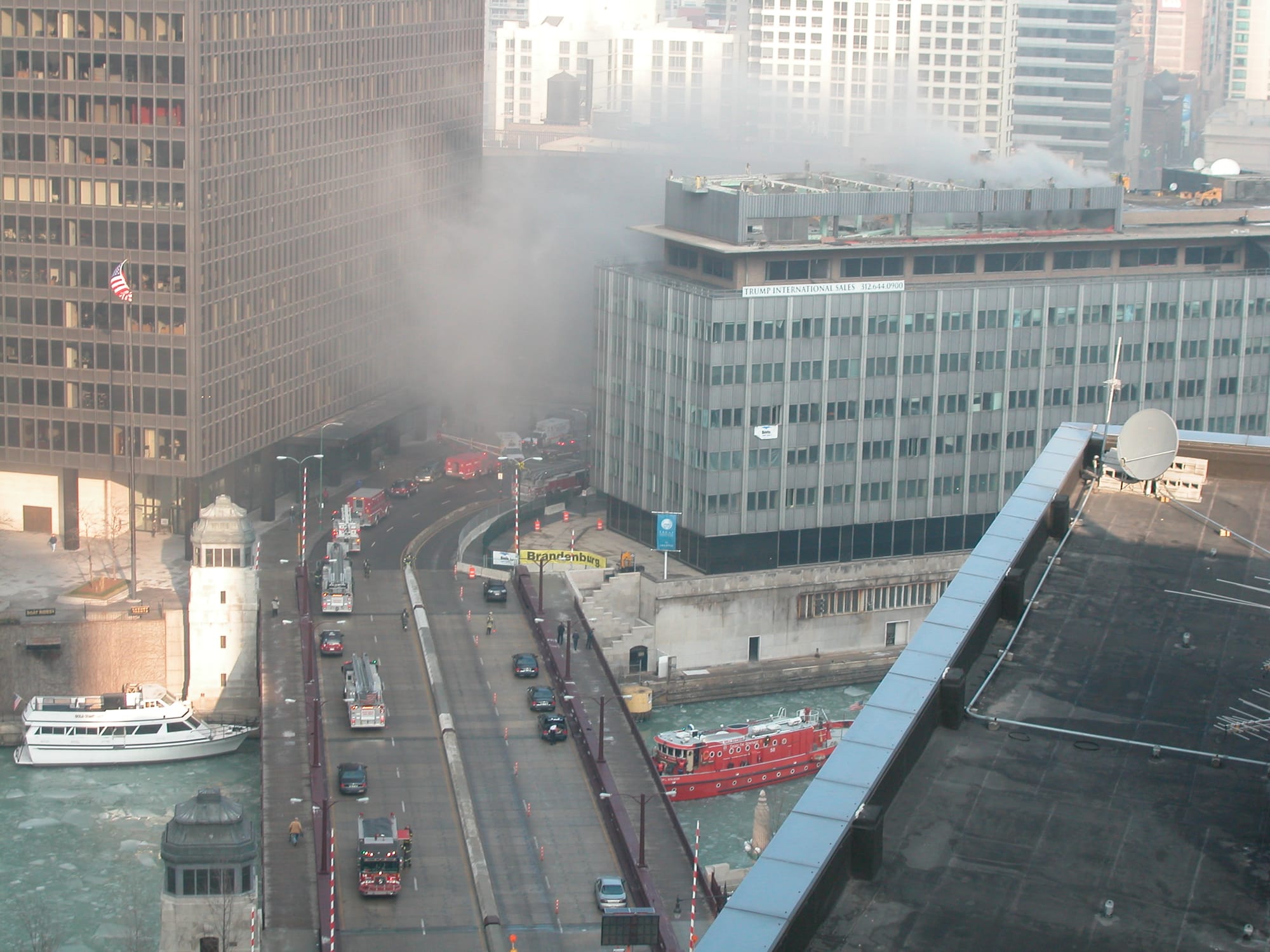
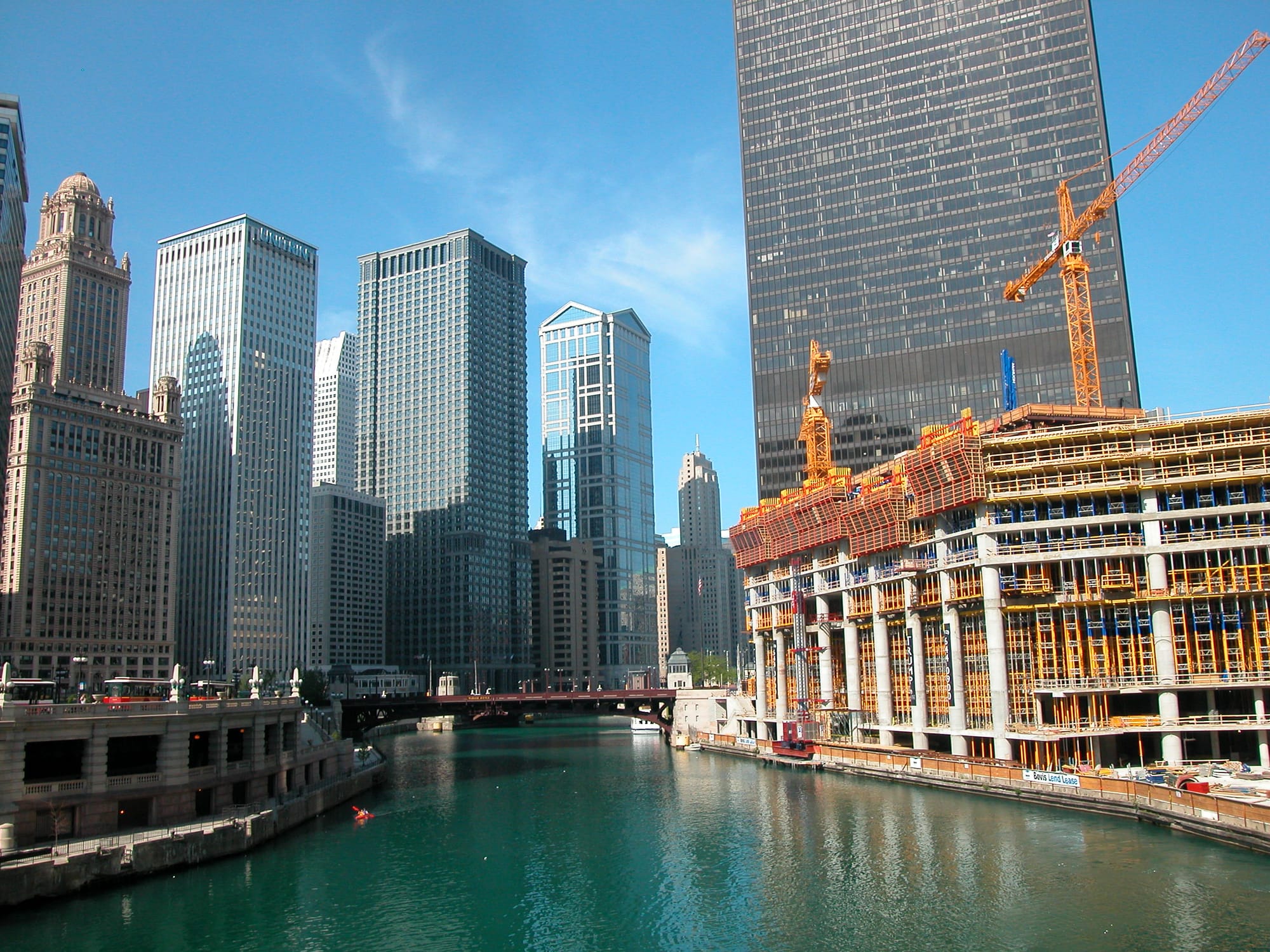
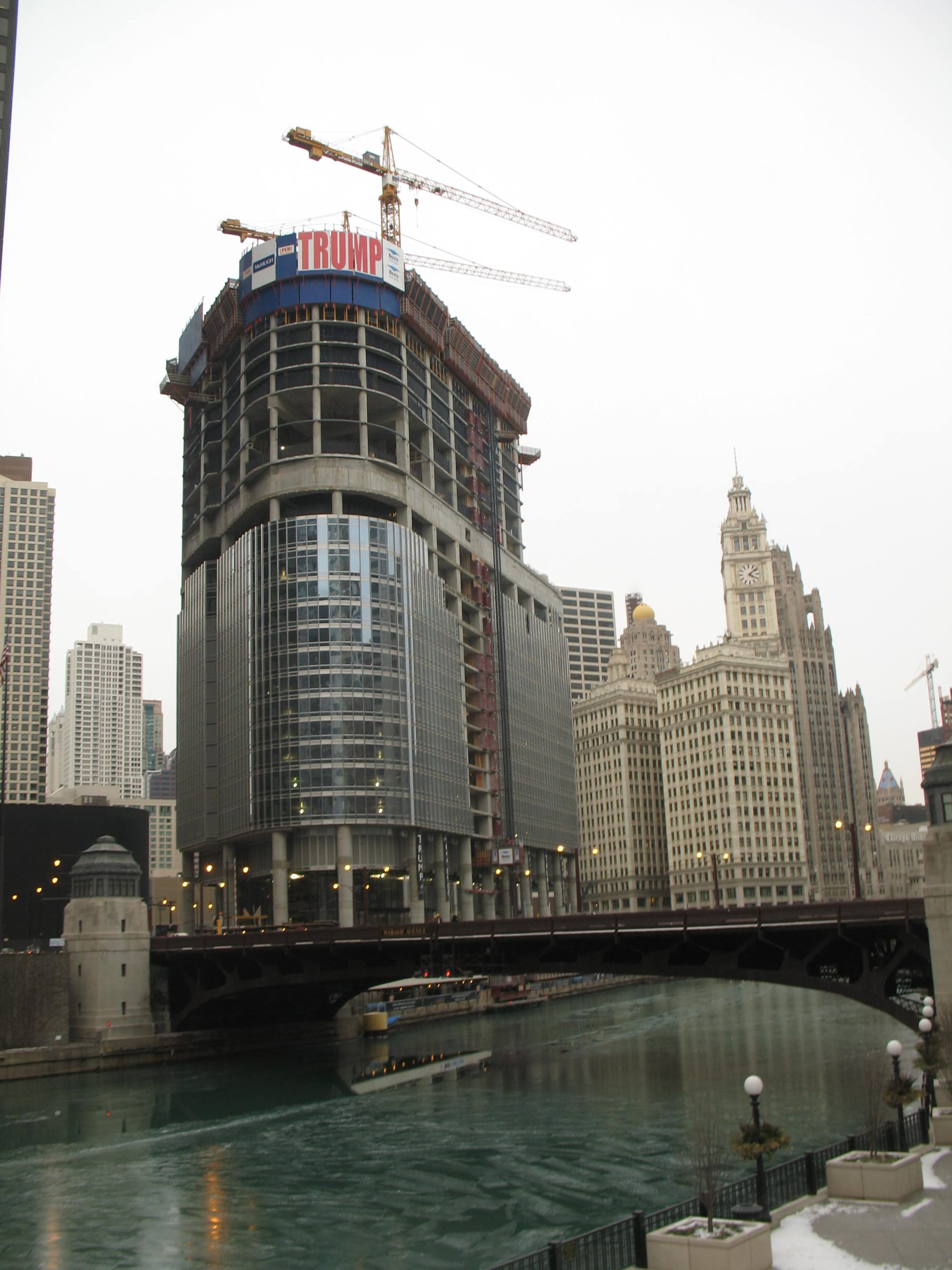
1944, Charles Cushman, Indiana University | 1945, Charles Cushman, Indiana University | 1958, Charles Cushman, Indiana University | Undated, Federal Highway Administration, Wikimedia Commons | 2004 fire, David Wilson, Wikimedia Commons | 2006, David Wilson, Wikimedia Commons | 2007, David Wilson, Wikimedia Commons
Looking east, 1928, Newberry Library
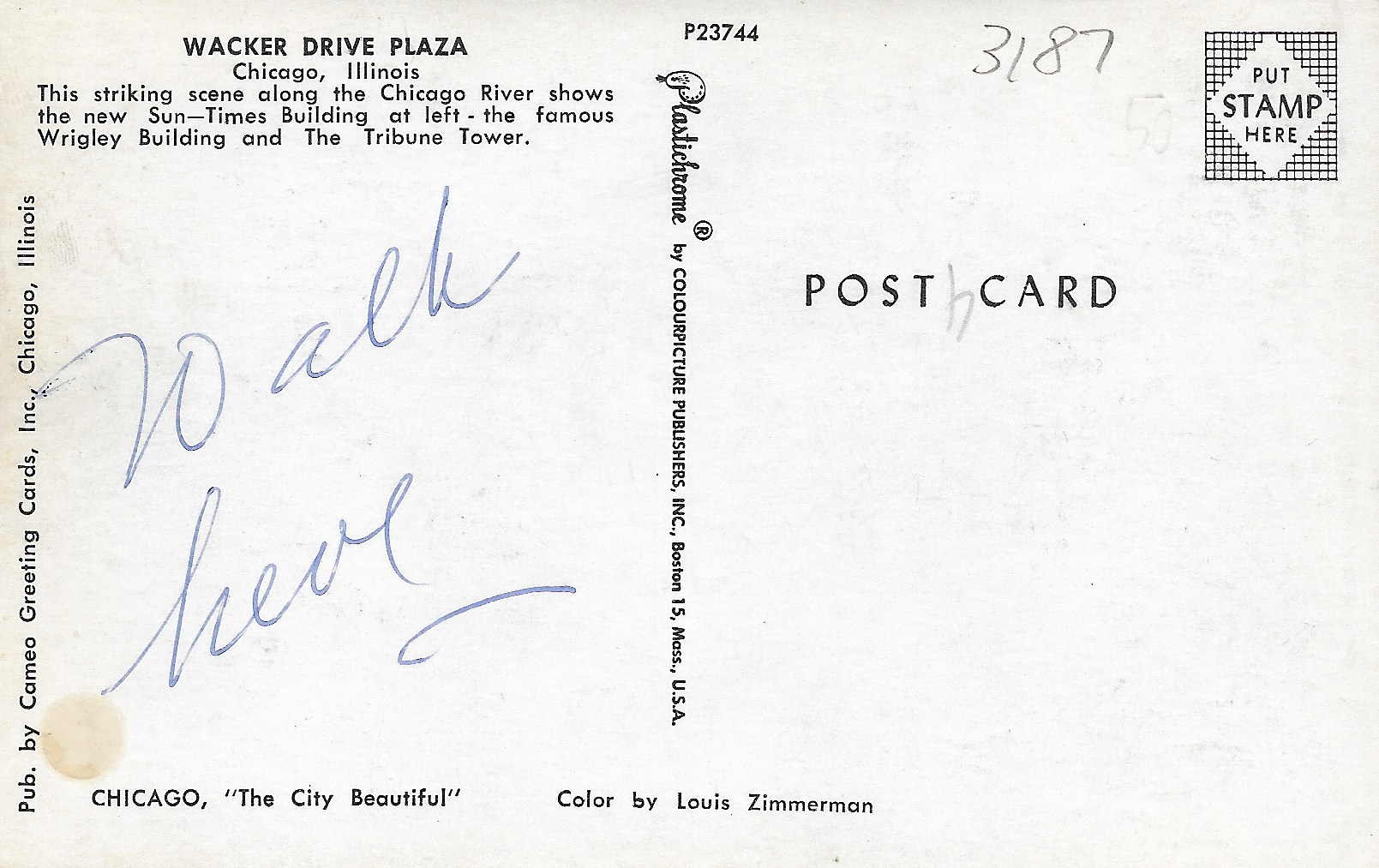

Member discussion: